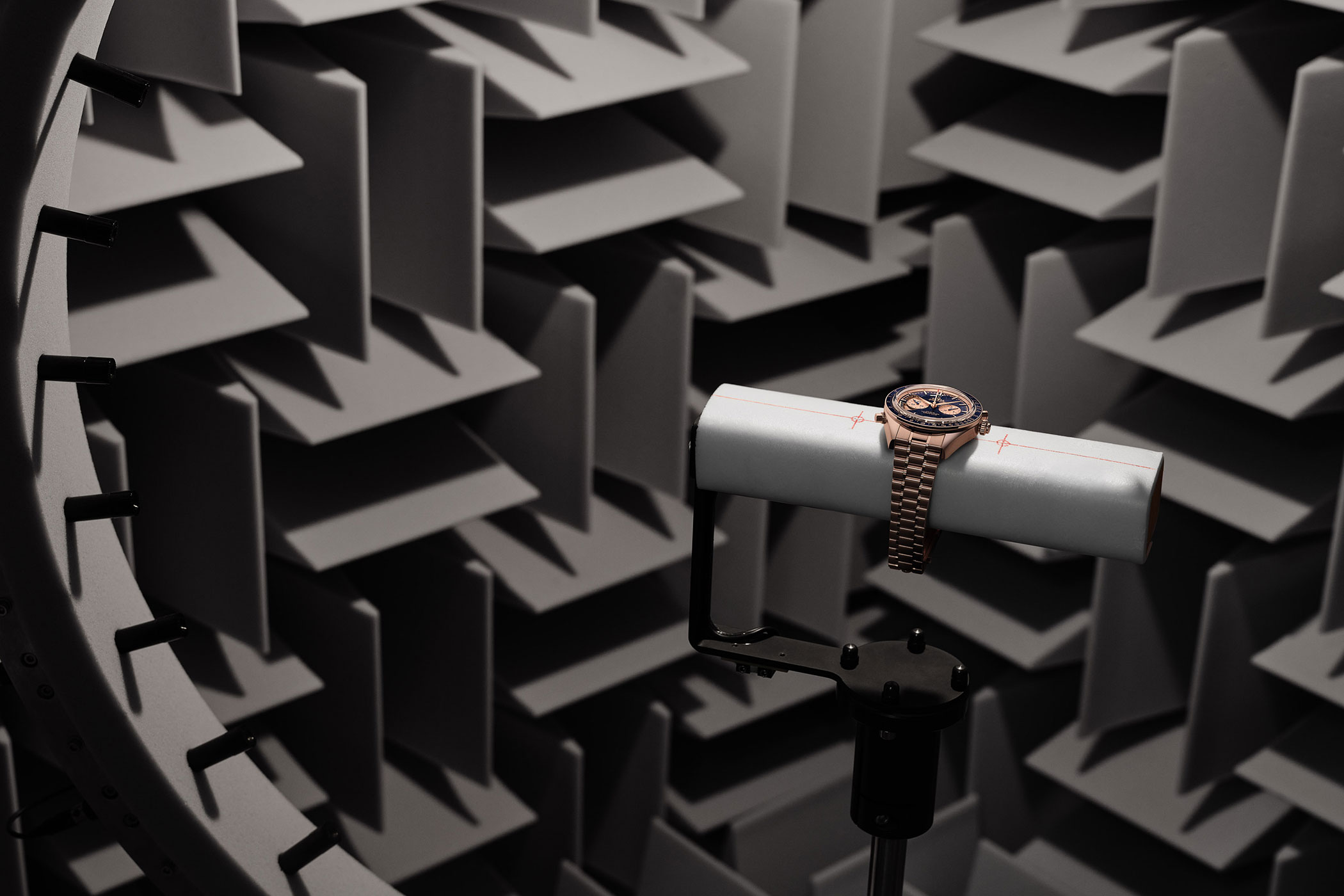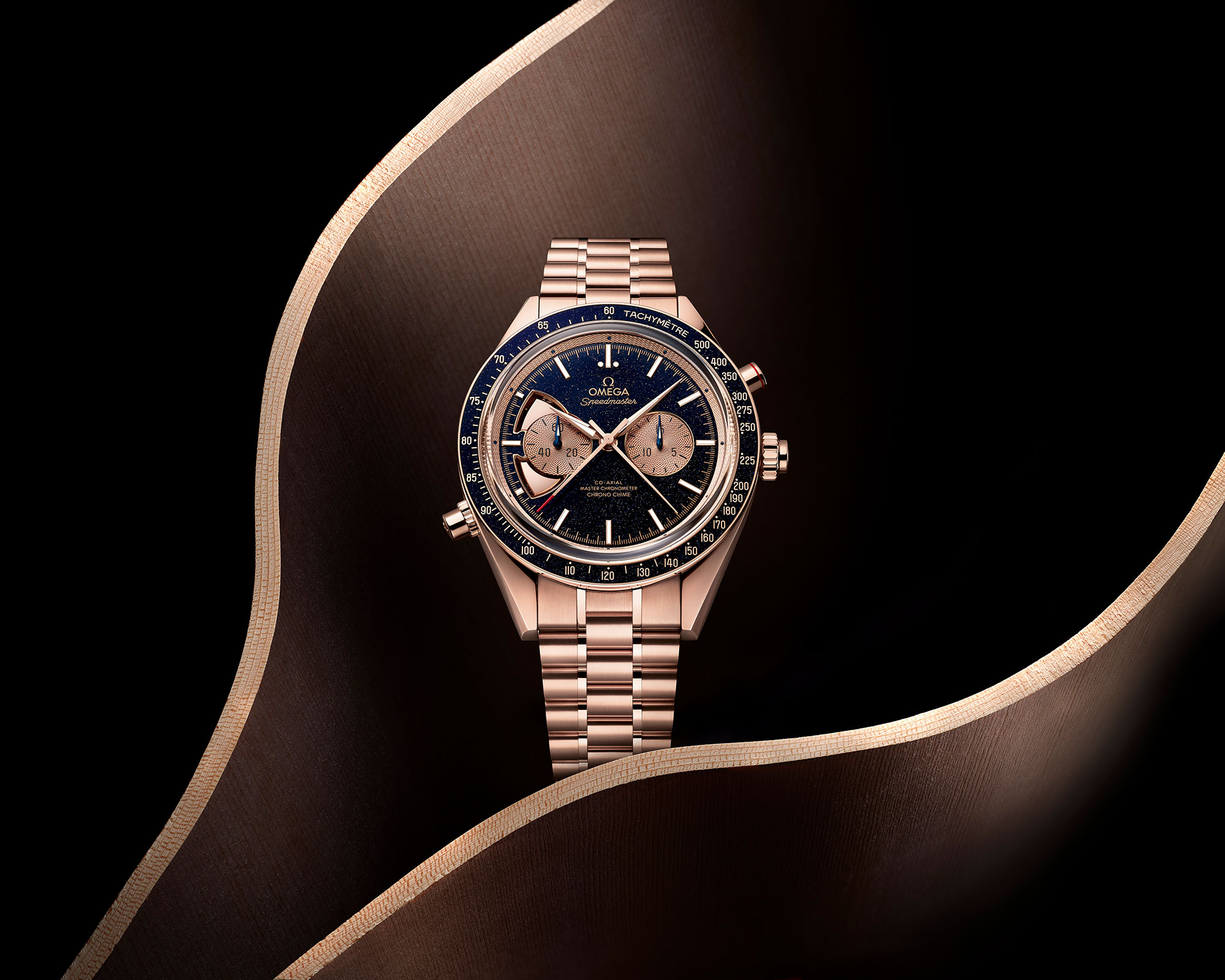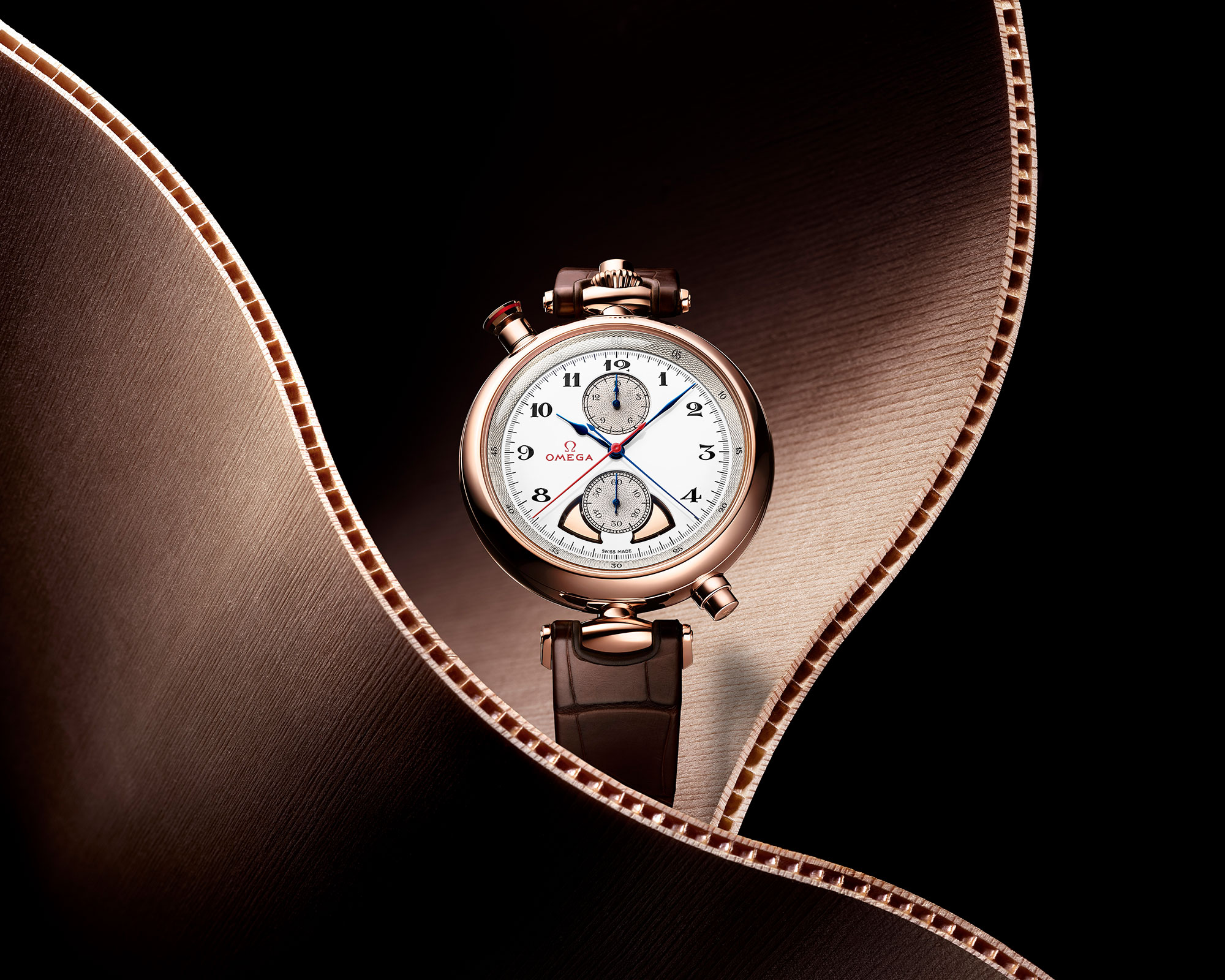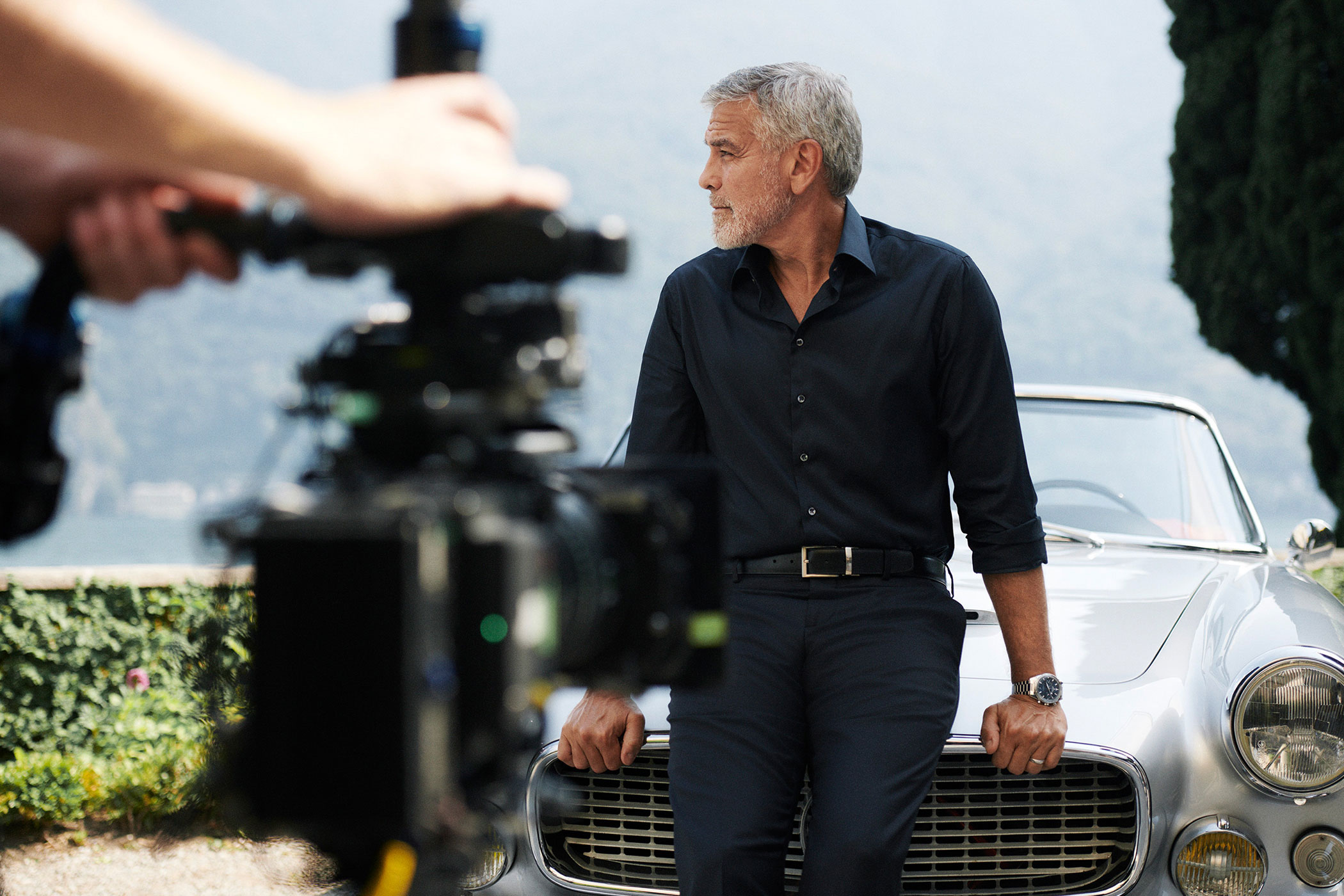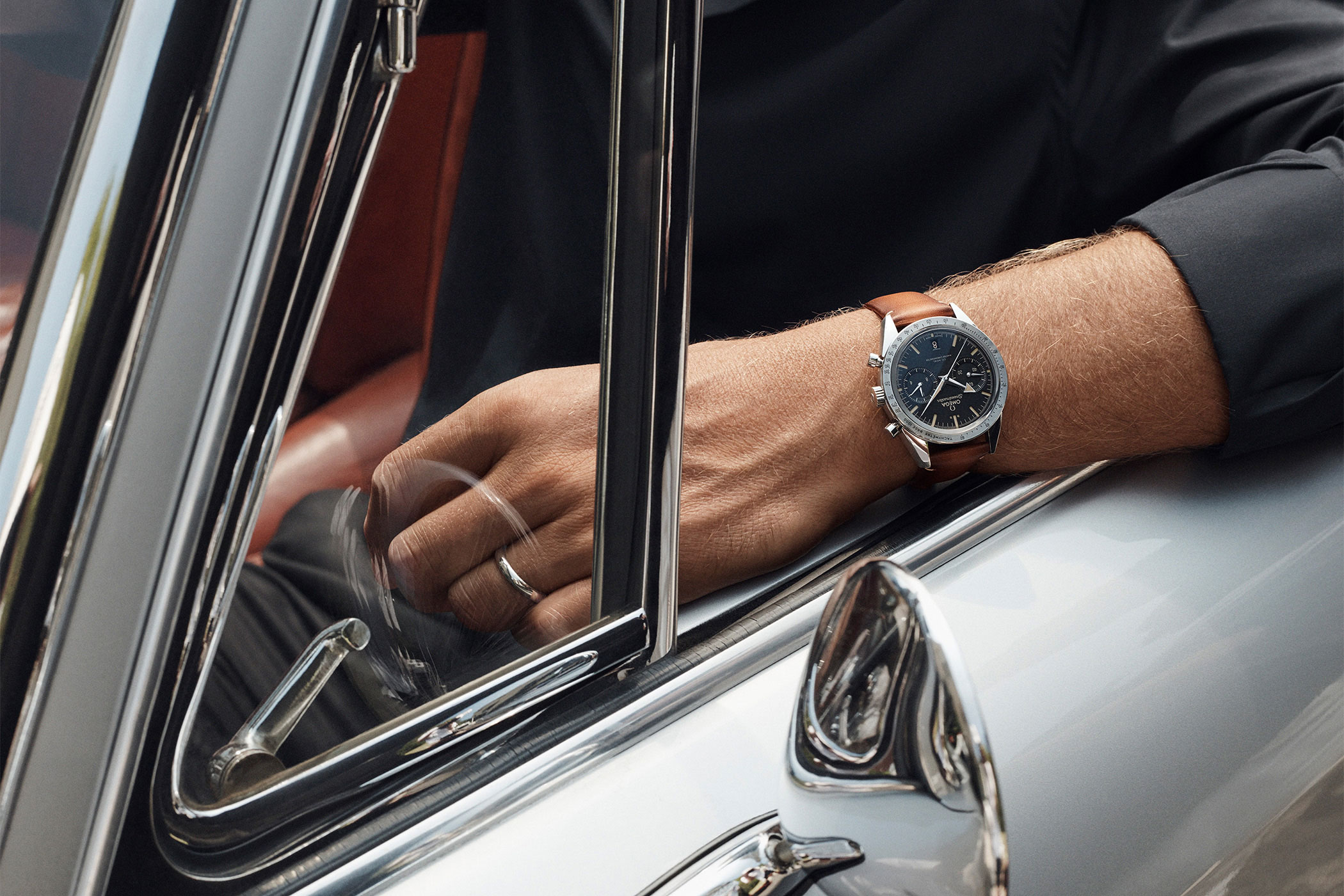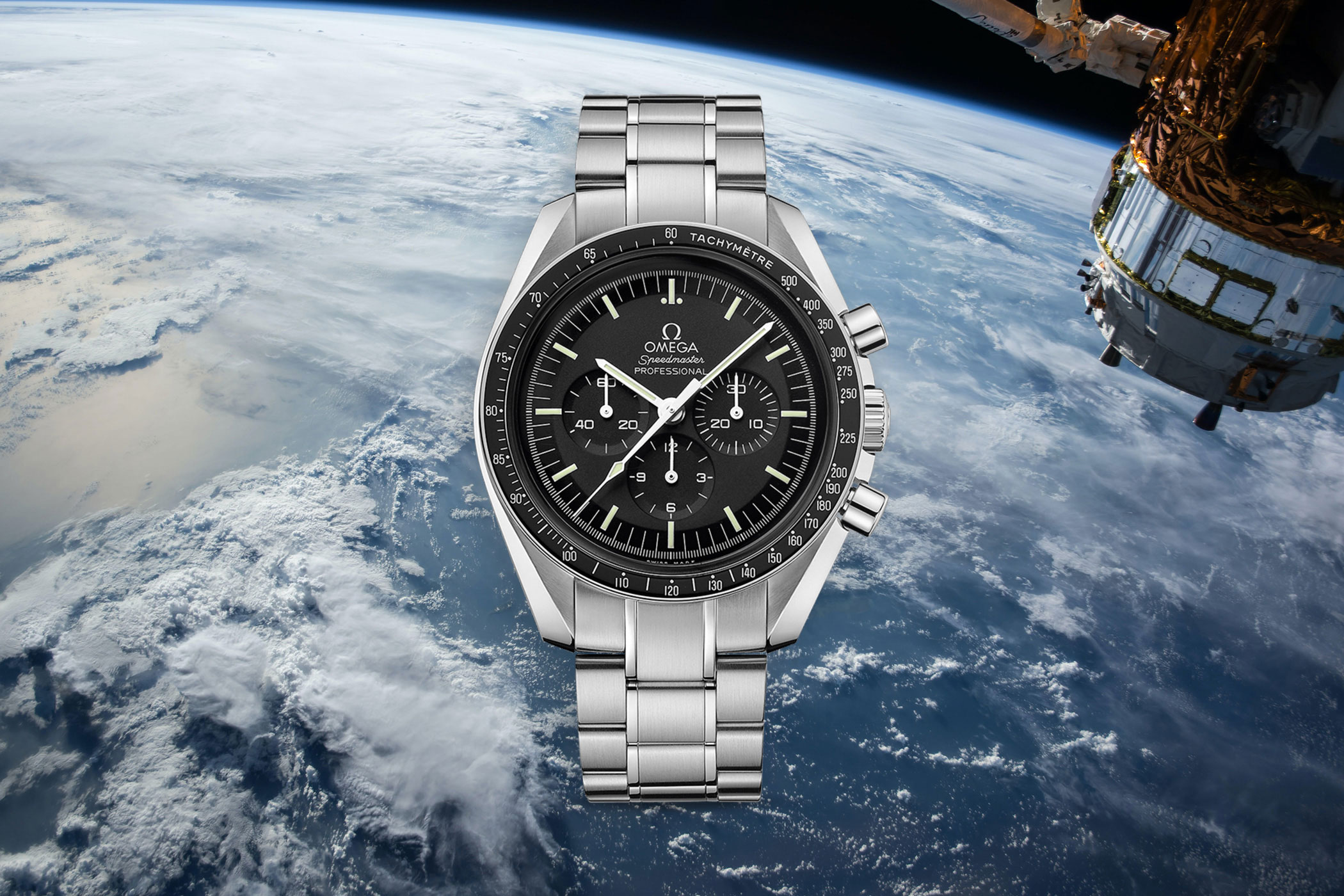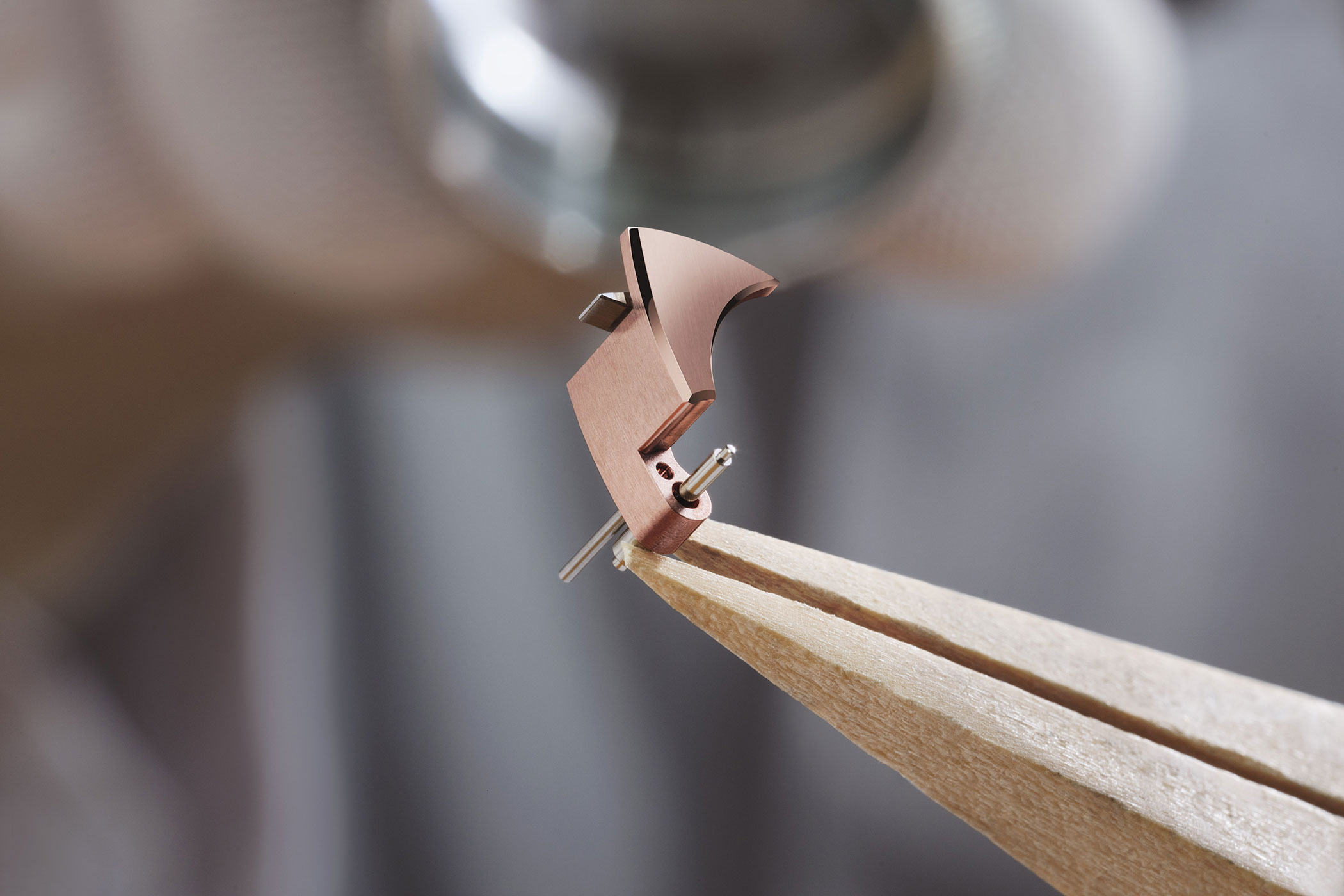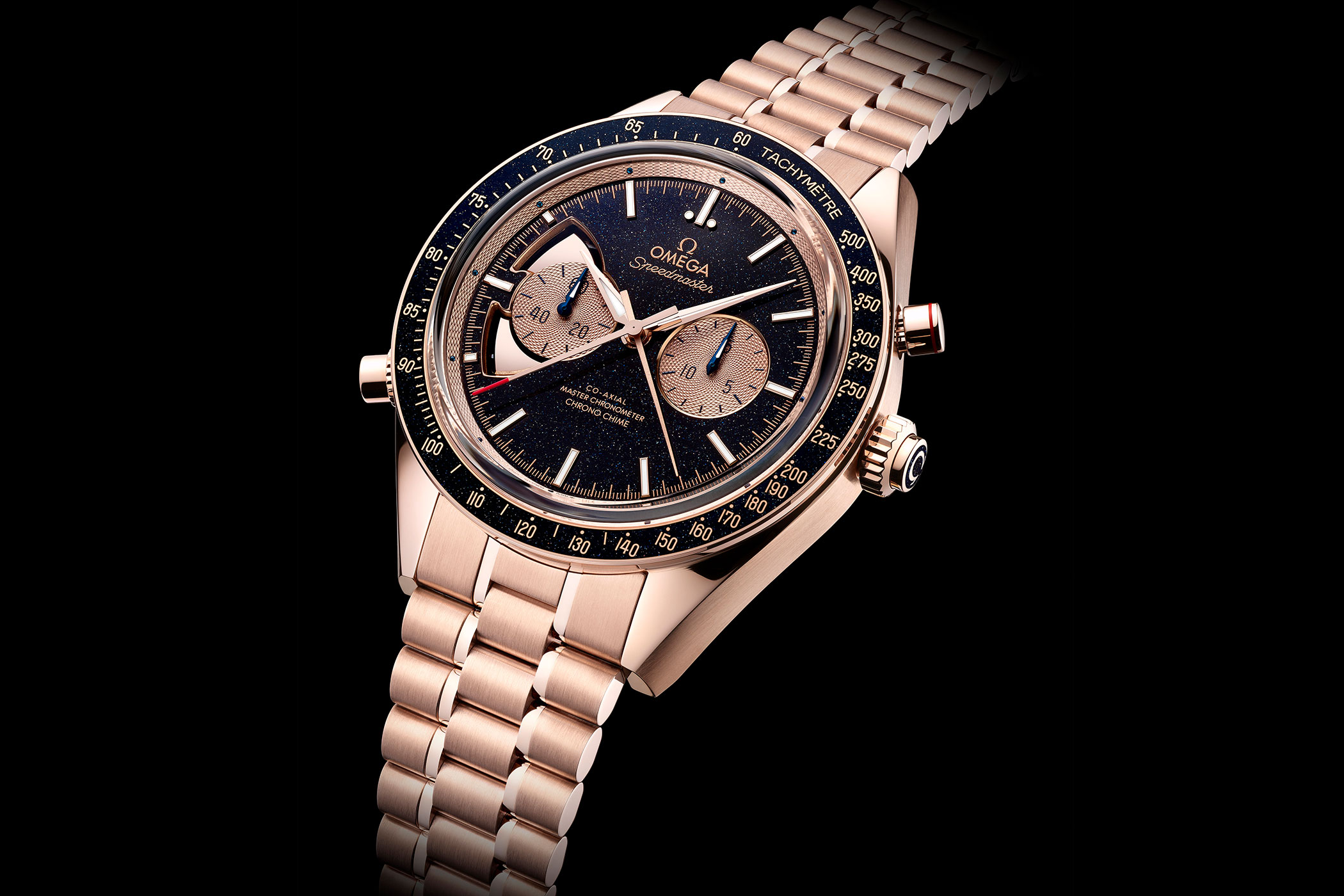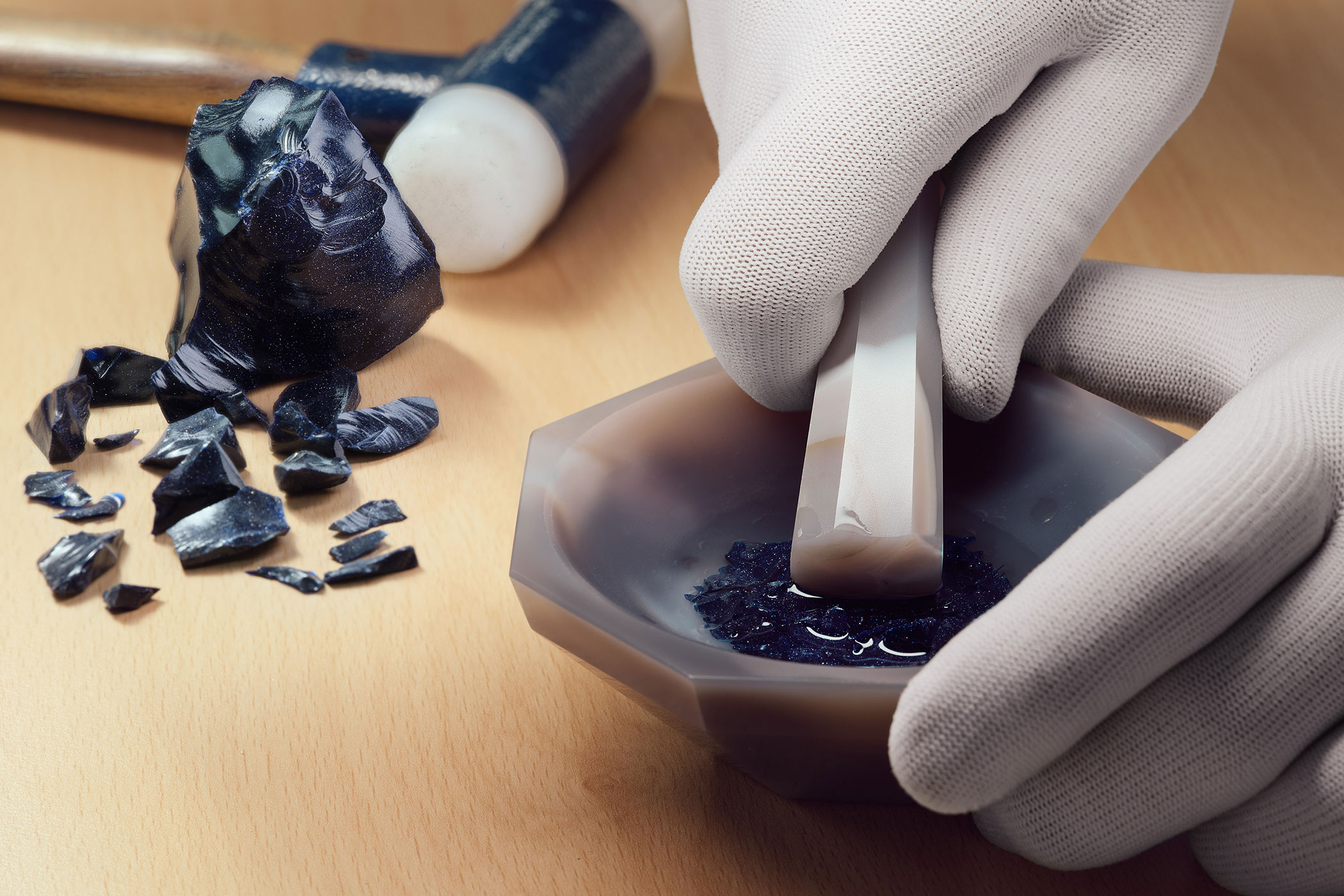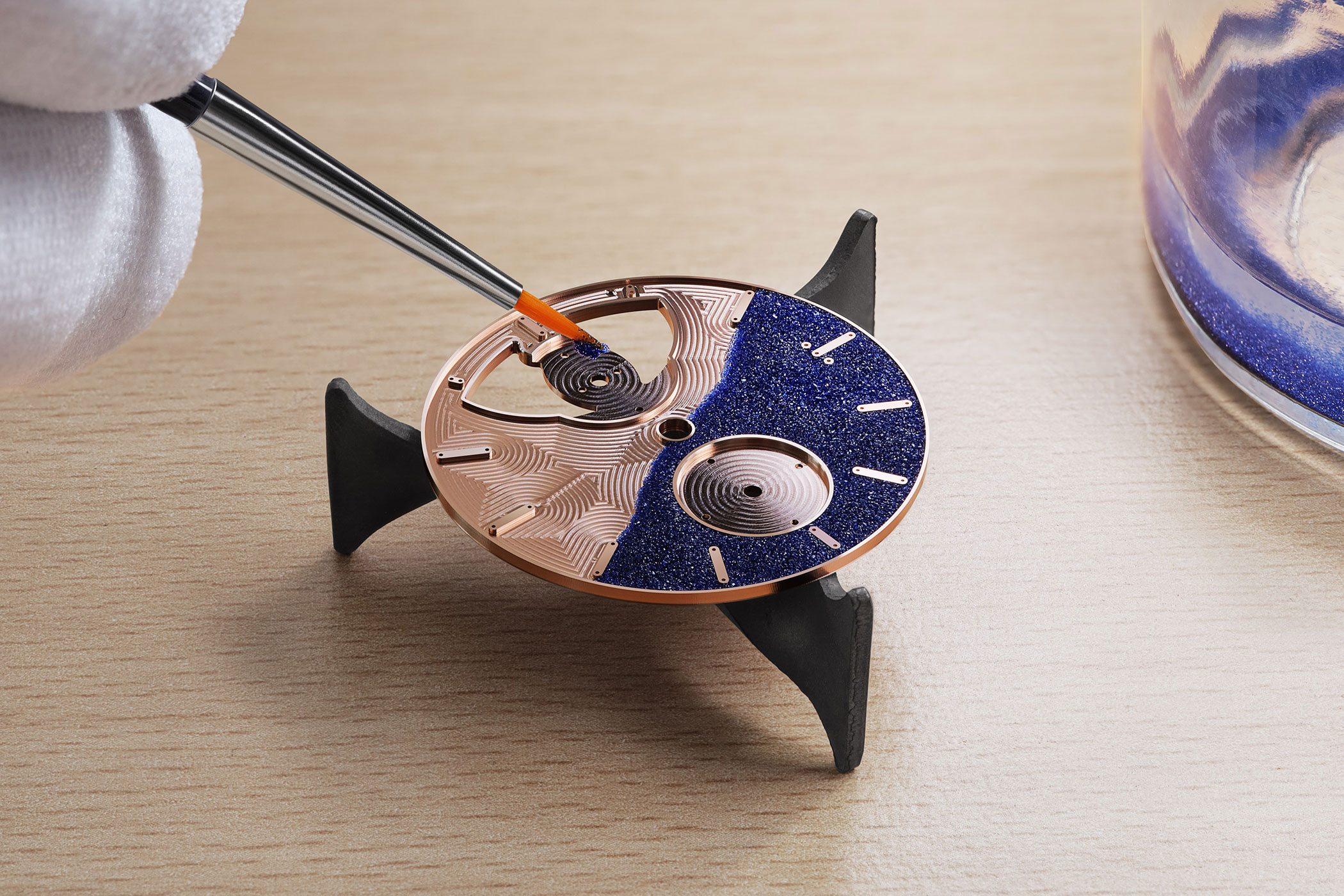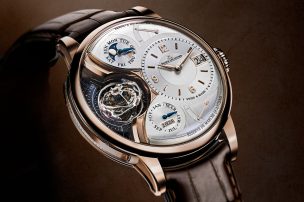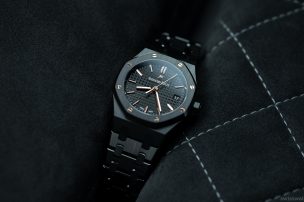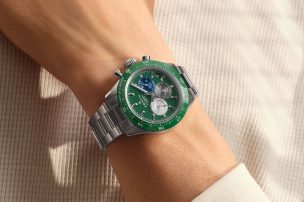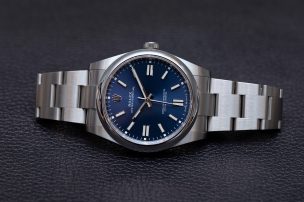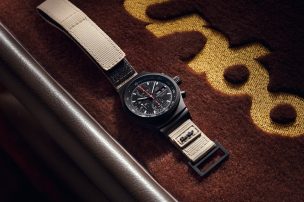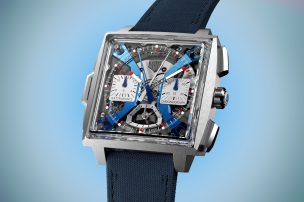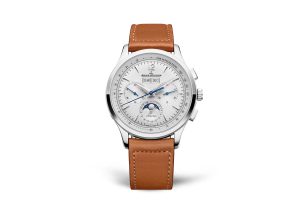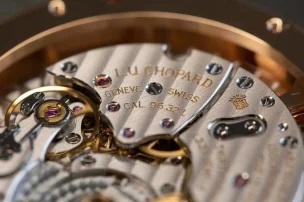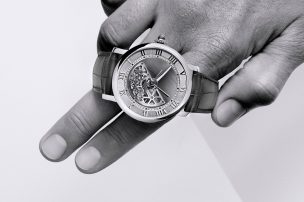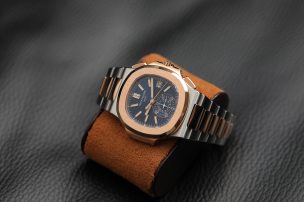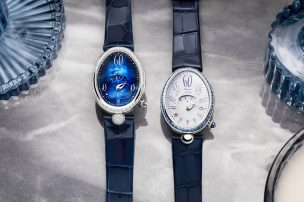
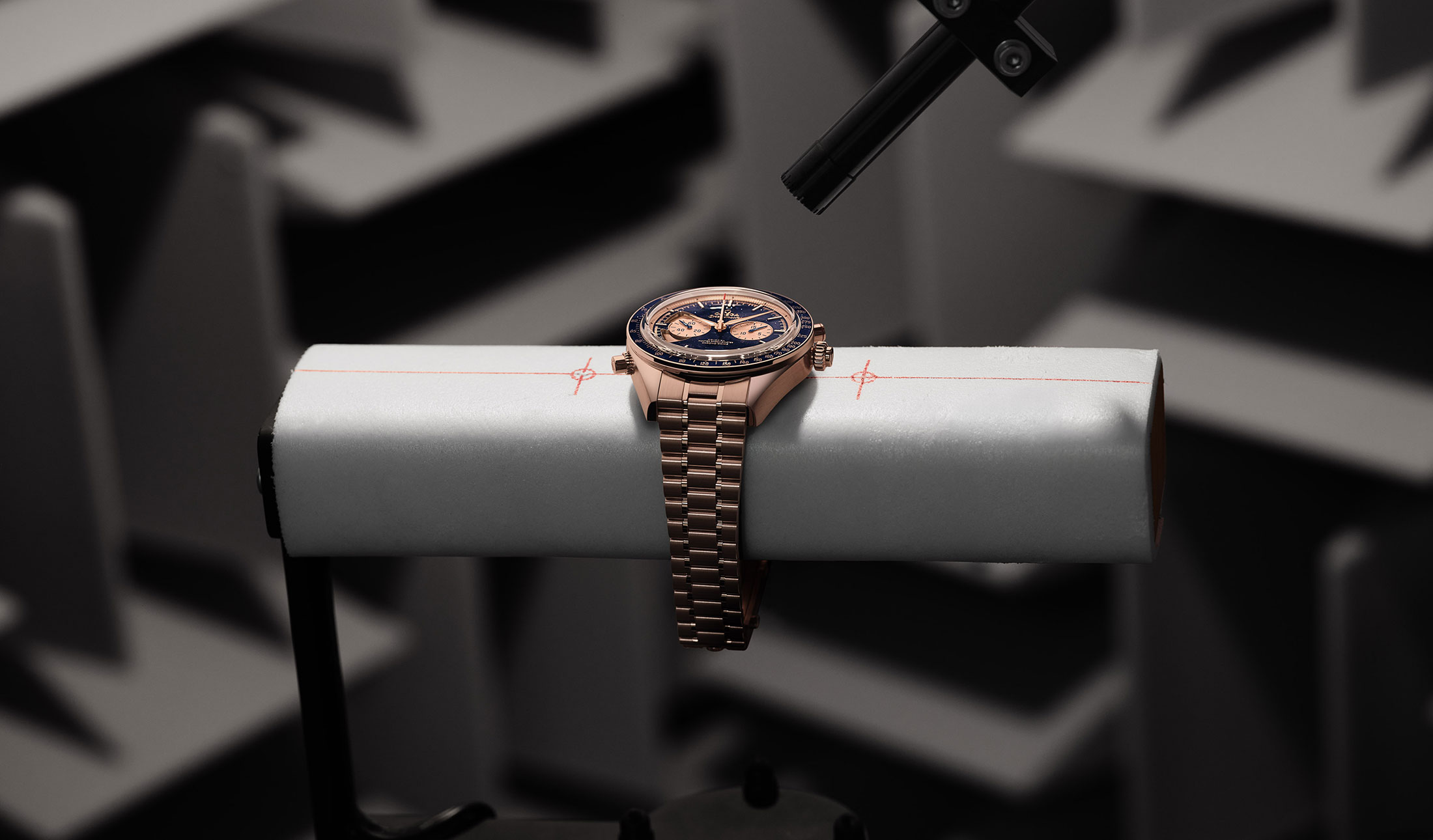
Omega’s Pivotal New Pieces: Making its Mark as an Haute Horlogerie Watchmaker
Omega is known for its moonwalking Speedmaster, deep-diving Seamaster and sporty, elegant Aqua Terra. Stylish, historic, reliable: that’s the best way to sum up Omega. But the brand is also known for having produced several significant technologies in the watch industry. With the industrial production of the Co-Axial escapement in 1999 and the introduction of the Co-Axial calibre in 2007, Omega set significant standards in its company history. This is why the news that Omega is once again flexing its horological muscles with the new Olympic 1932 Chrono Chime and the Speedmaster Chrono Chime has sent fans around the world into a frenzy. The two novelties clearly mark the next chapter in Omega’s never-ending journey of horological innovation and can be seen as a resounding tribute to the talent of Omega’s watchmakers.
The two novelties herald the next chapter in Omega’s journey of ceaseless horological innovation with their unprecedented complication. What ticks inside the two watches is unlike anything that has gone before, as they house the most spectacular movement Omega has ever conceived. The Calibre 1932 is the world’s first calibre to combine an integrated chronograph and minute repeater.
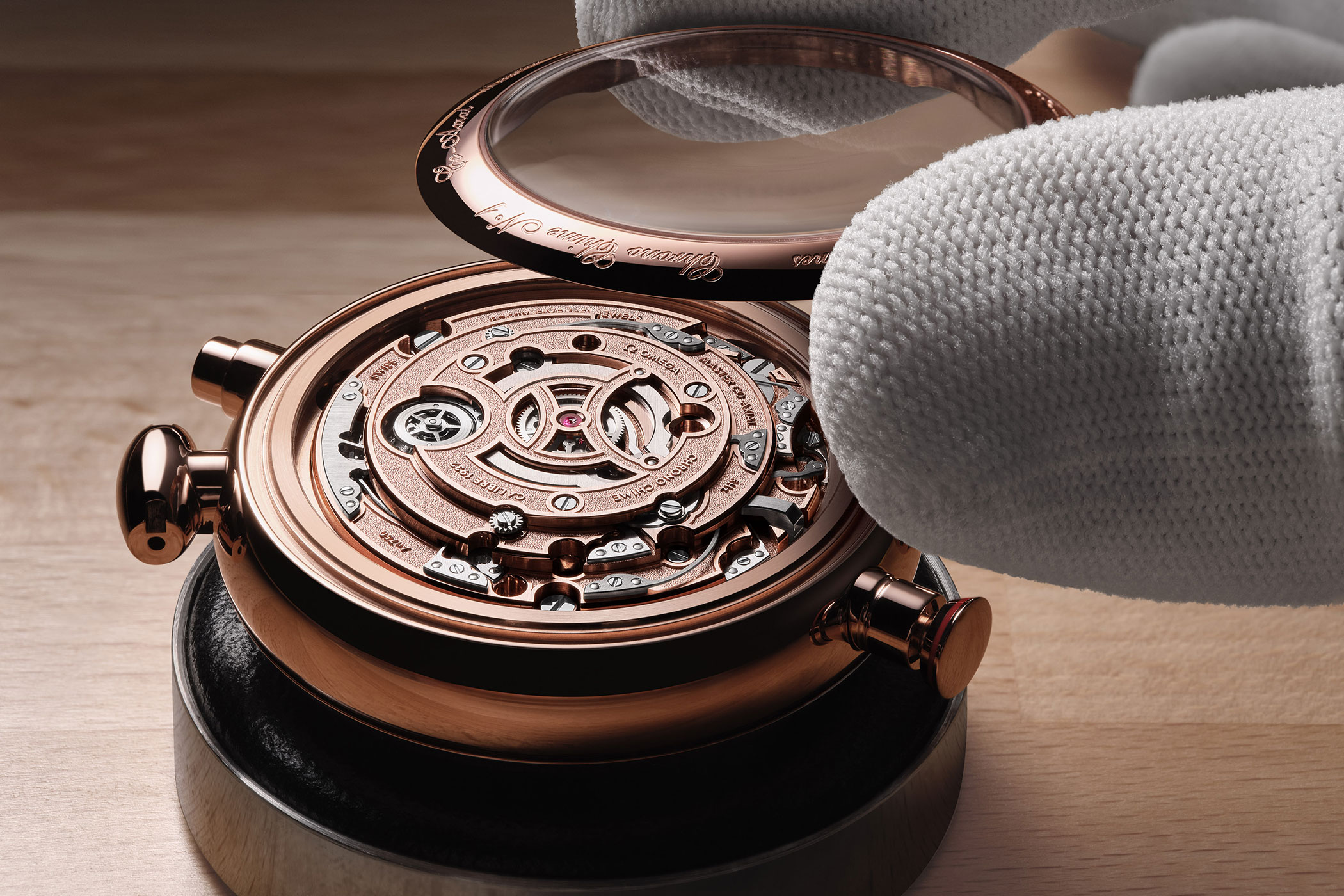
Due to the incredible complexity of this complication, only one watchmaker in the world is currently able to build the movement, while second is now in training. In this extensive article, Swisswatches reveals exactly why the extraordinary calibre is such a resounding tribute to the skills of Omega’s watchmakers – and how this unprecedented interweaving of complications came about.
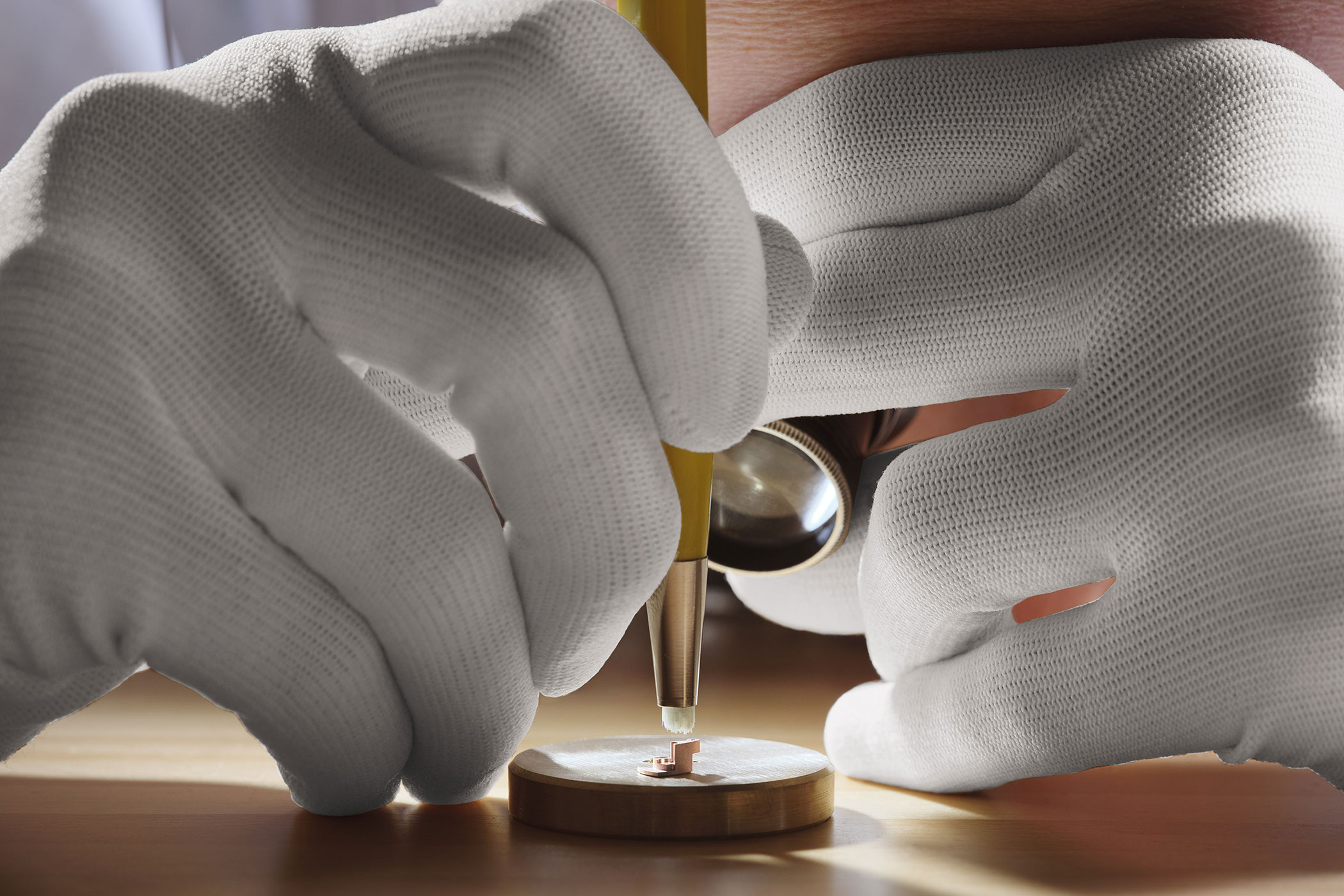
24 Hours with Omega: An unforgettable trip
Our ’24 Hours with’ articles are often the most exciting part of what we do, and the launch of the new minute repeater chronograph watches was captivating before we even arrived. Sitting down on the plane travelling from Zurich to Omega’s event location in Los Angeles, we bump into Omega CEO, Raynald Aeschlimann. The conversation quickly turns to business, and Aeschlimann seems more than pleased with the ways things are going for the brand. ‘The American market is growing in a good, and very exciting way,’ he beams. ‘Over the last seven years, you can see how the visibility of Omega as a brand is changing. We are a true luxury brand.’



Our meet-cutes with Omega continue upon landing at LAX, where we encounter Lucien Jornod, the Vice President of Marketing at Omega. He famously shot a campaign with George Clooney, where he shot the ’57 Speedmaster with ’57 Maserati. Journeying together from the airport, he informs us that the launch we are attending is ‘absolutely huge’ and incredibly special.
He’s quite right. The launch, attended by about 70 people in total, takes place at the Disney Concert Hall – famous, appropriately enough, for its incredible acoustic qualities. Of course, it wouldn’t be an Omega watch launch without the LA Philharmonic orchestra performing music specifically composed for the event. Argentinian-American composer Nicolás Humberto Repetto wrote two new original pieces for the occasion, including the lively The Sound of Omega. “The music was inspired by the elegance and acoustic characteristics of these revolutionary new timepieces,” Repetto explains. The performance begins with an ostinato that propels the music to its climax – at which point the new watches are revealed, projected onto large, swinging veils.

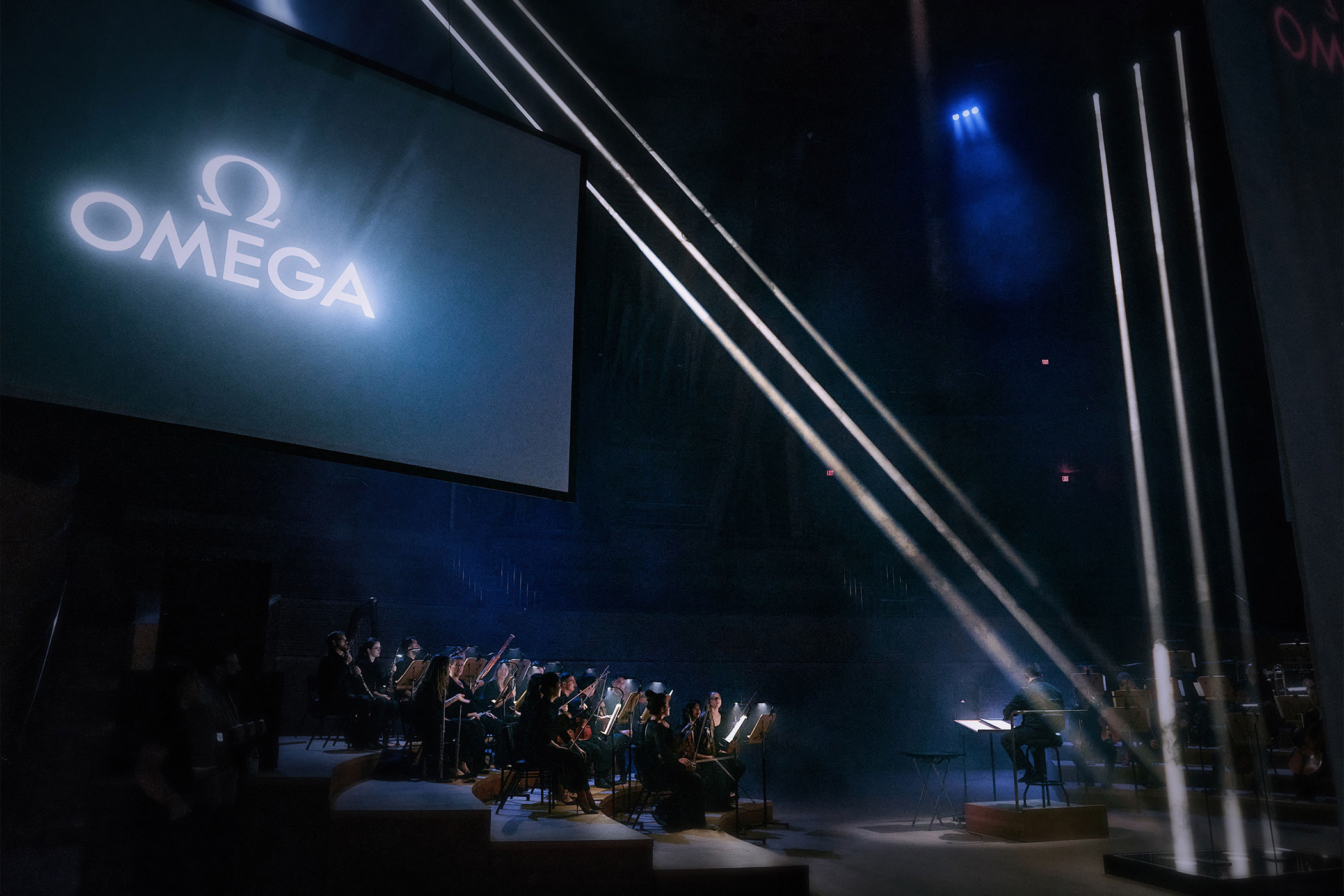
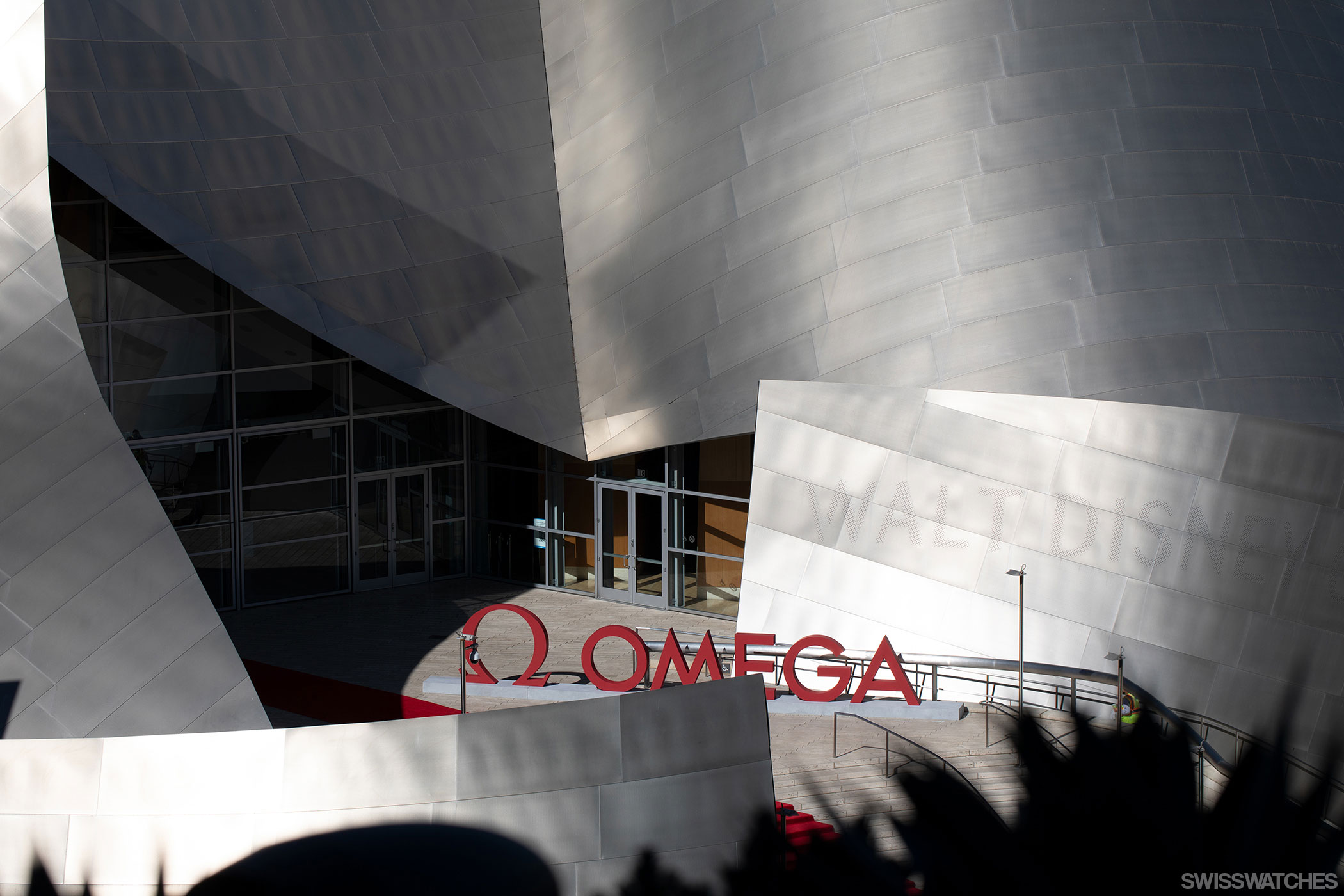
Three historic watches that shape the new duo
The new timepieces carry characteristics of the past and modernity in equal measure. To understand the historical background of both watches and what brought them into being, let’s first look at their historical precursors. Aesthetically, the watches combine features of Omega’s first minute repeater (and wristwatch in general) with the pocket chronographs used to keep time at the 1932 Los Angeles Olympics.
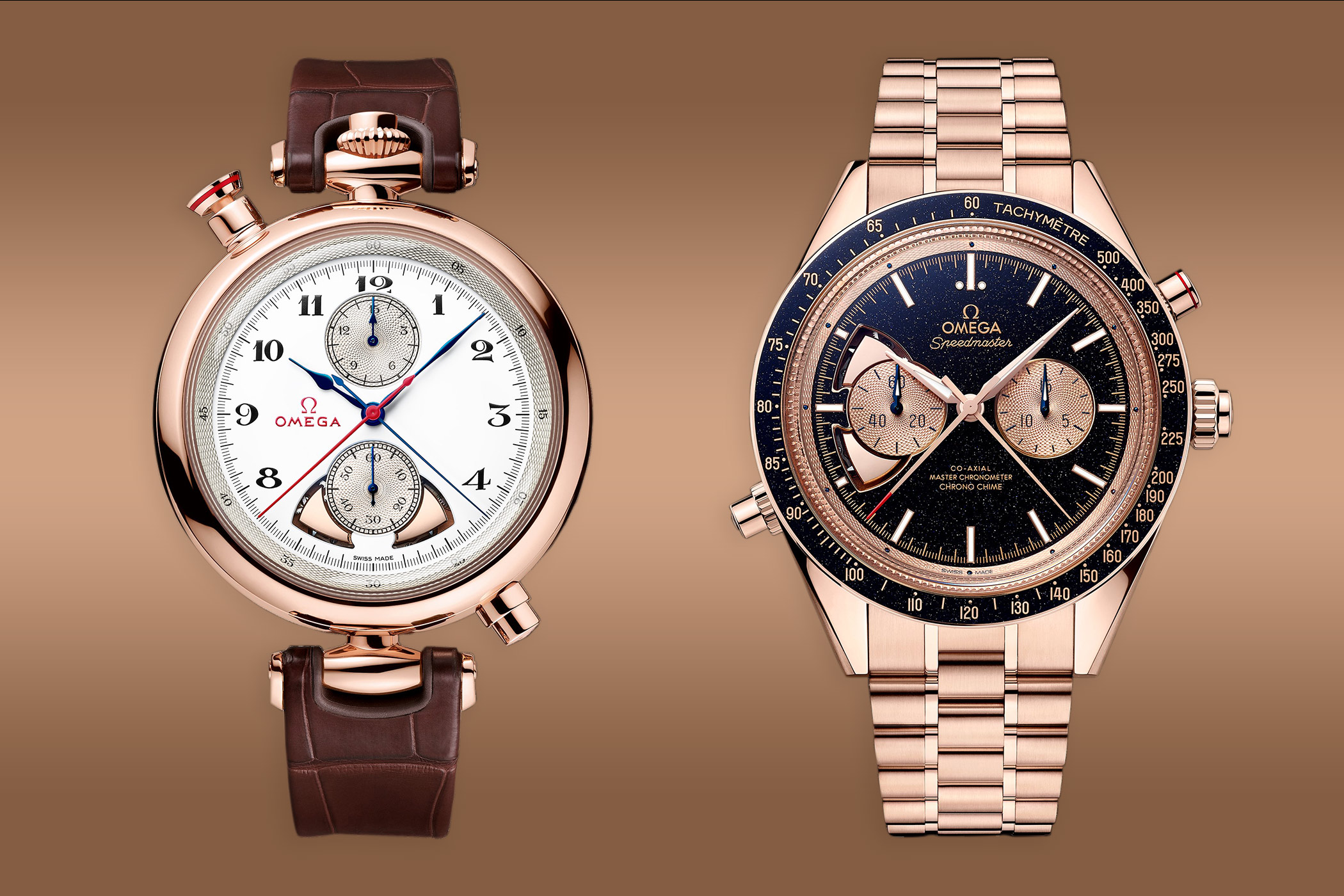
In 1892, the Brandt brothers launched the world’s first minute repeater for the wrist, the Louis Brandt 13”. It was a fascinating miniaturized version of existing pocket watches that allowed time to be set by pressing the pushers. Inside the 18-carat red gold case ticked a small, highly complex Lépine calibre, which indicated the hour, quarter and minute repeater by operating a slide to wind and release it.
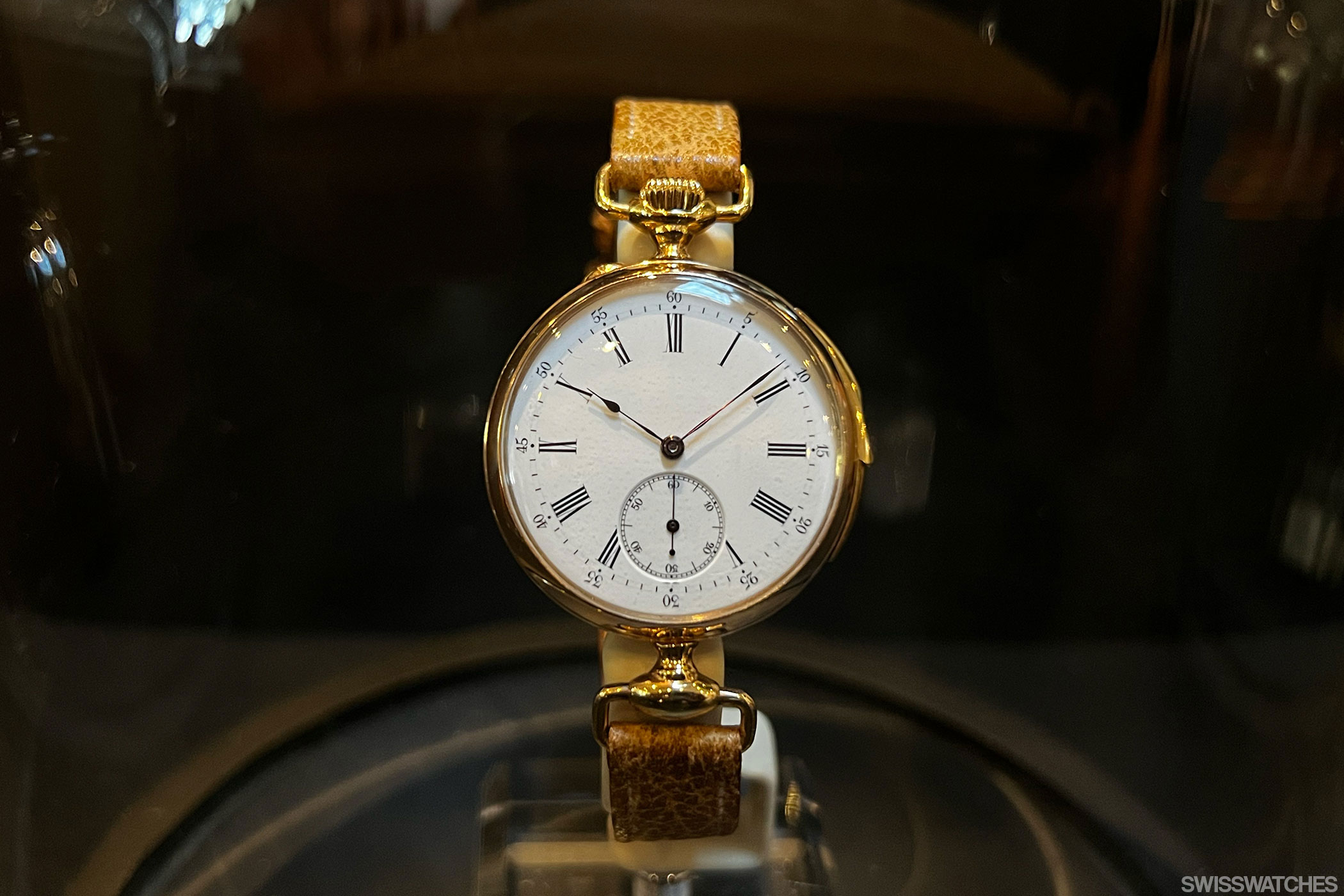
In 1932, Omega first showed interest in the Olympic Games by presenting their pocket chronographs as the official sponsor of the Los Angeles Games. With the help of 30 pocket watches, the manufacture was entrusted with the timing of all disciplines in that year’s Games. The timepieces were not only used in summer, but also in winter sports such as ice hockey, Alpine skiing and Nordic skiing.
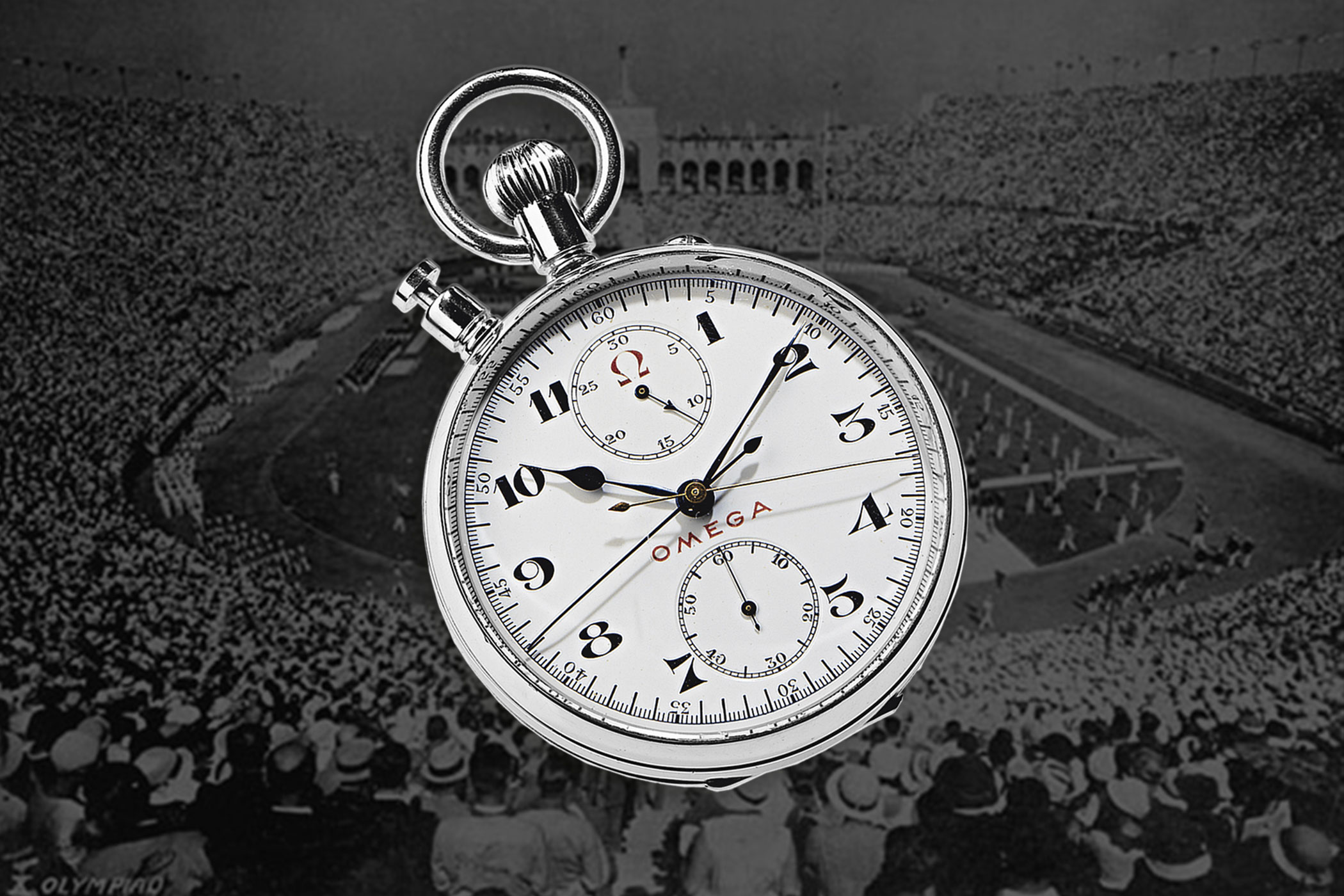
Deeply rooted in its aesthetic history, the new Speedmaster Chrono Chime recalls the iconic Speedmaster Moonwatch Professional 42 mm, the first watch worn on the moon. On the 21st of July 1969 at 02:56 GMT, the first humans stepped onto the surface of the moon – and accompanying them was the Omega Speedmaster Professional. This impressive timepiece was an integral part of the equipment on all six lunar missions and embodies the brand’s pioneering spirit like no other. All three of the aforementioned historic milestones are now brought to life once again, with their stylistic details reflected in the two new releases.
Omega is born: the historical movements
Omega looks back on a long history of watchmaking achievements. As early as 1885, the Brandt brothers, sons of the founding father Louis Brandt, launched their first serialised calibre: the ‘Labrador’. Barely 10 years later, capitalising on this strong start, the Brandt brothers launched the 19-ligne calibre. More modern and innovative than anything that had come before, it combined winding and time-setting via the spindle, and the crown used at the time (by now it was 1894) was also pioneering.
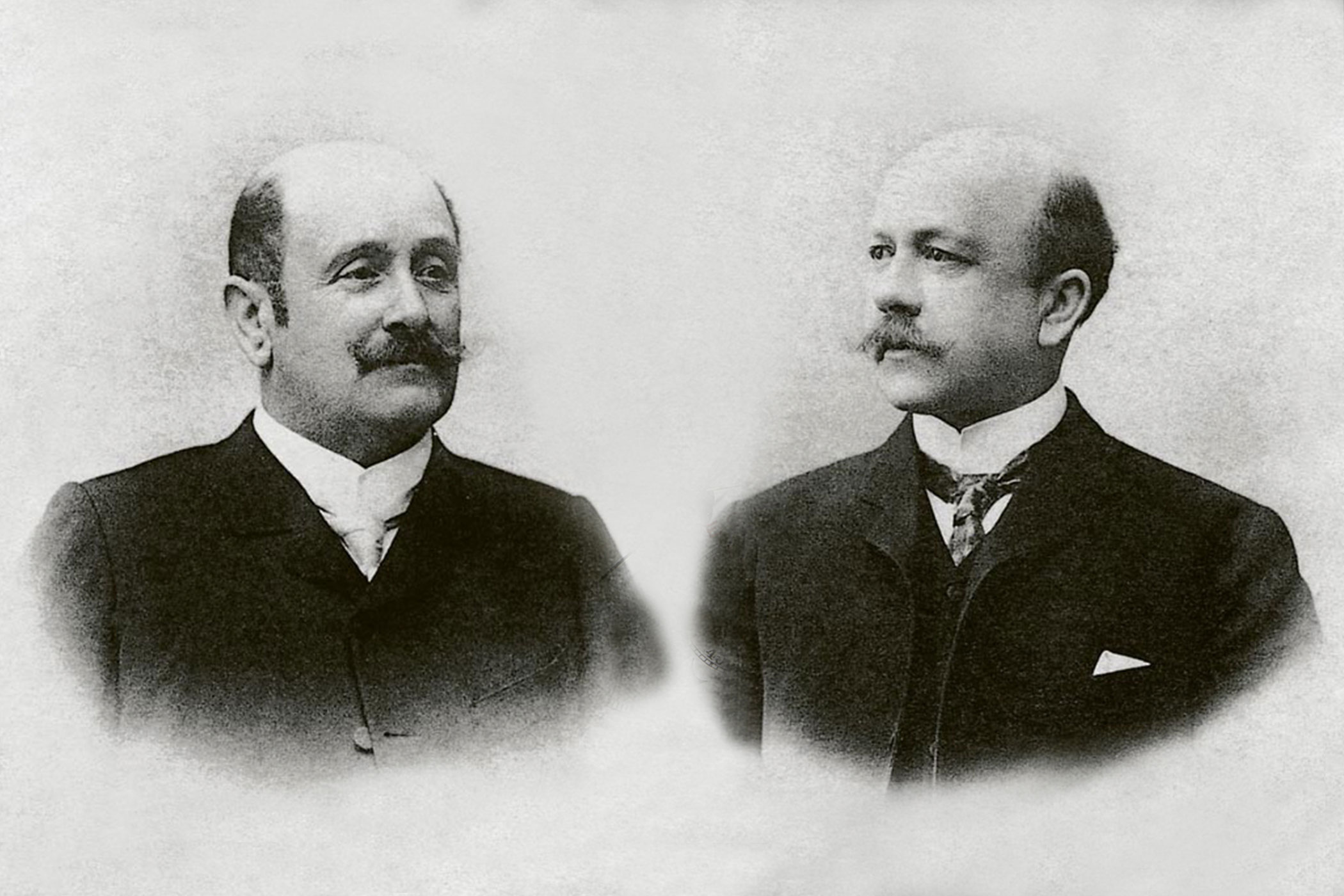
The brothers branded the 19-ligne with the name Omega, a name often used to signify the end. How ironic, since the movement, with its great success, is symbolic of the beginning of Omega. Thrilled by the movement’s breakthrough and reputation, the two sons quickly changed the company’s name to Omega Watch Cooperation.

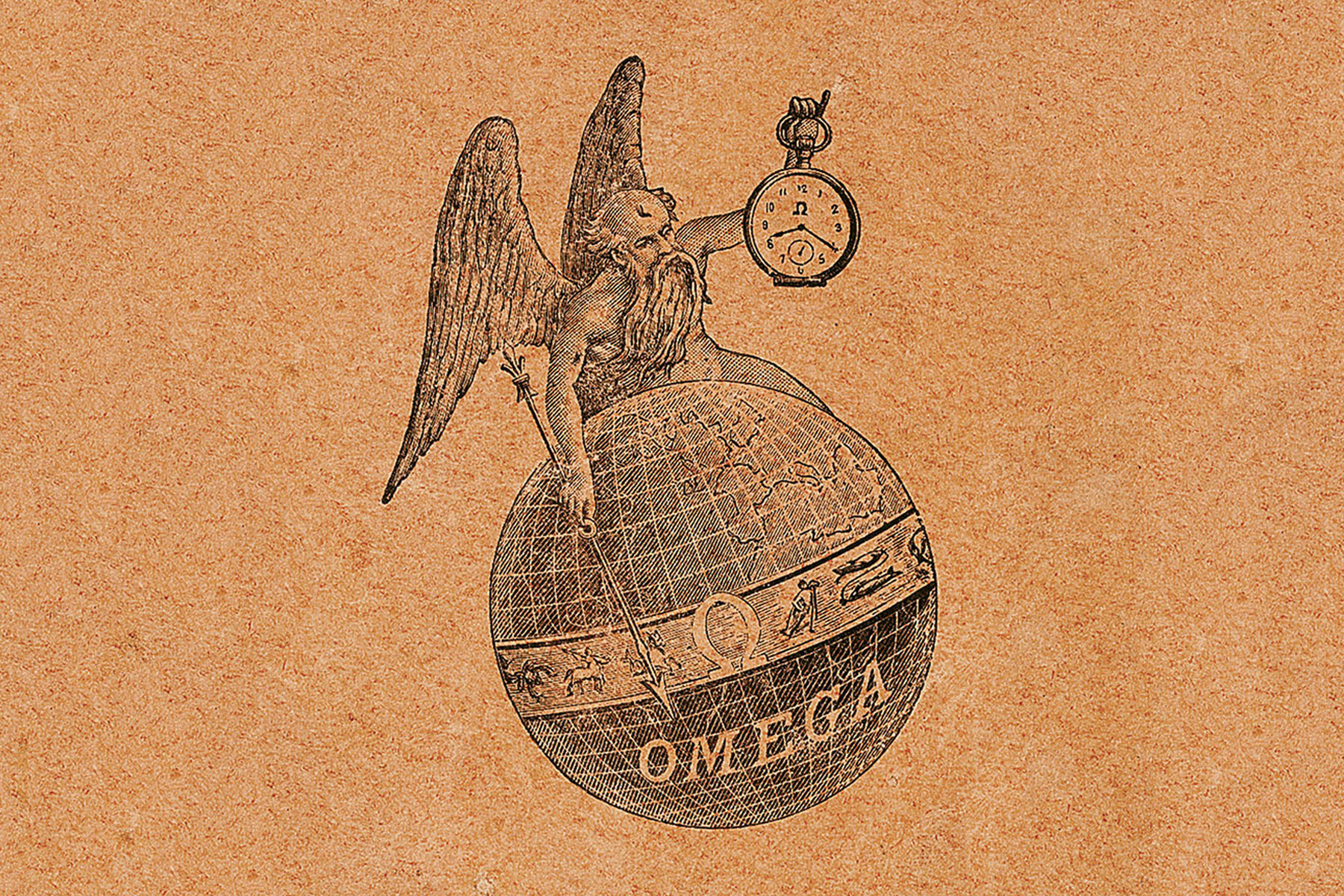
Fast-forwarding almost 100 years, Omega marked another turning point in its corporate history in 1999 with the introduction of the Co-Axial escapement developed by George Daniels, the industry’s first practical watch escapement in around 250 years. Just eight years later, in 2007, Omega introduced the De Ville Hour Vision, a chronometer that showcased the improved reliability and accuracy of the new Co-Axial calibre 8500/8501 with a glance through the open sapphire crystal caseback. With the launch of this calibre, Omega was now allowed to rejoin the ranks of brands that develop and manufacture their own movements.
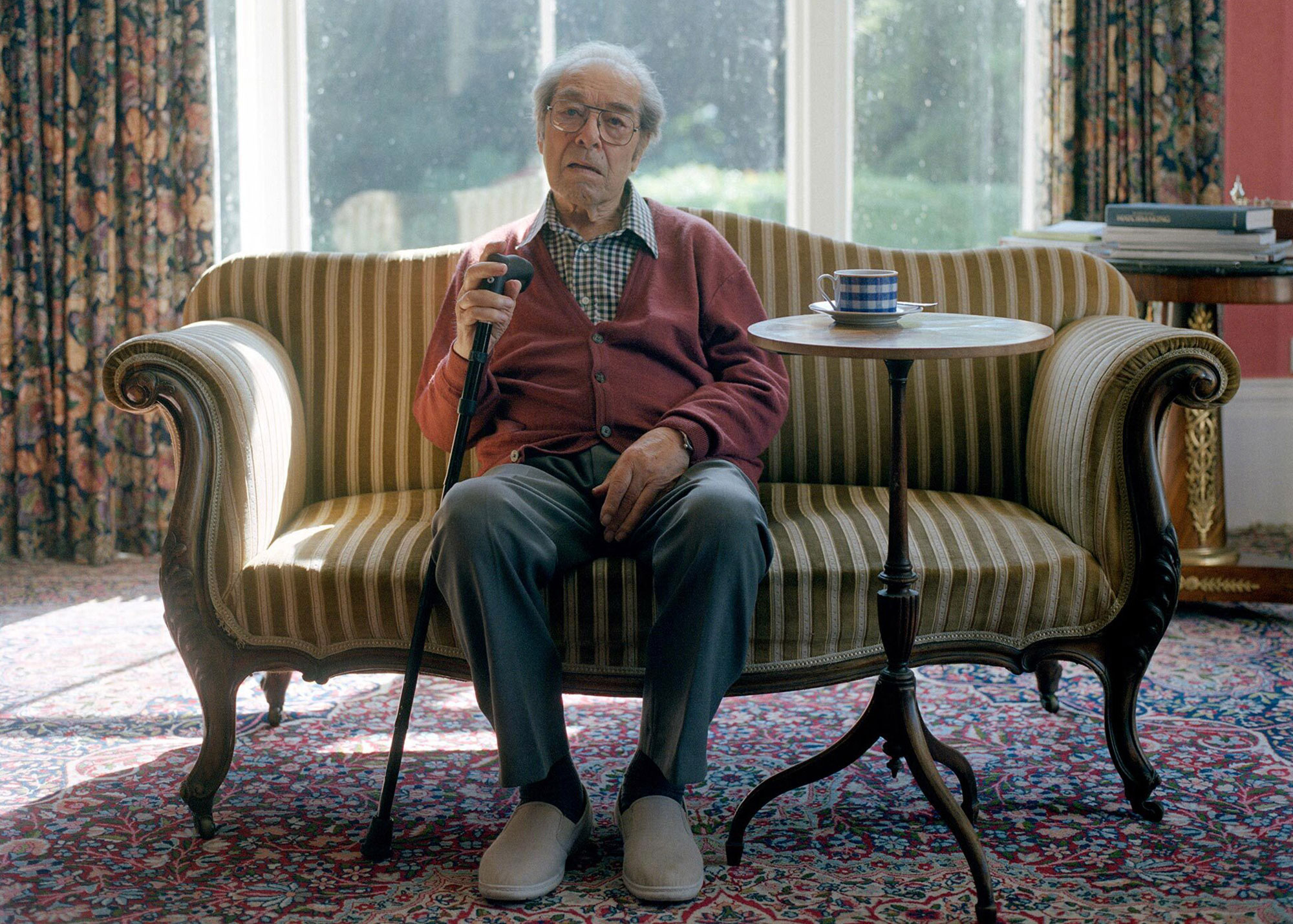
George Daniels, 2011
Credit © Olivia Arthur / Magnum Photos / Agentur Focus
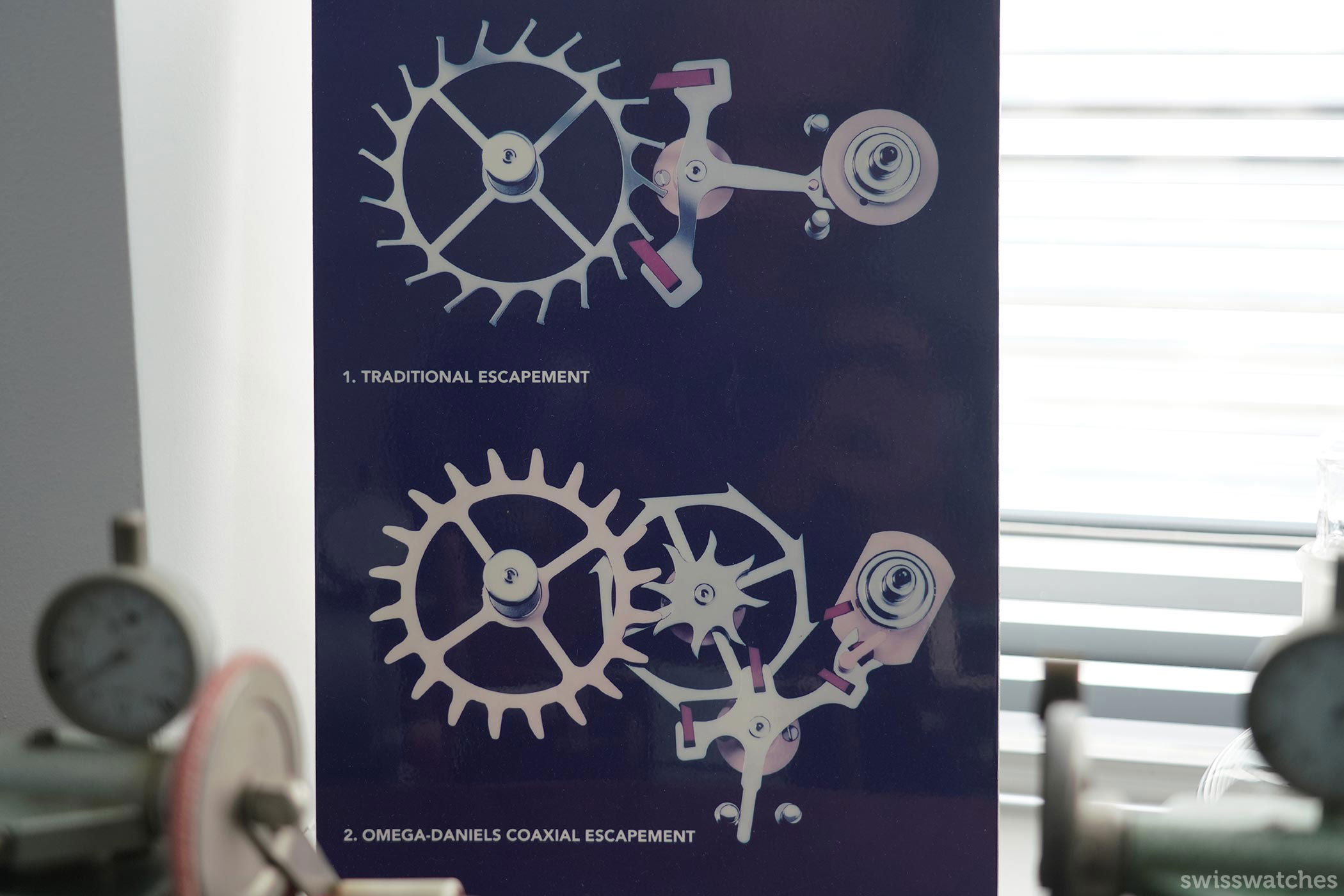
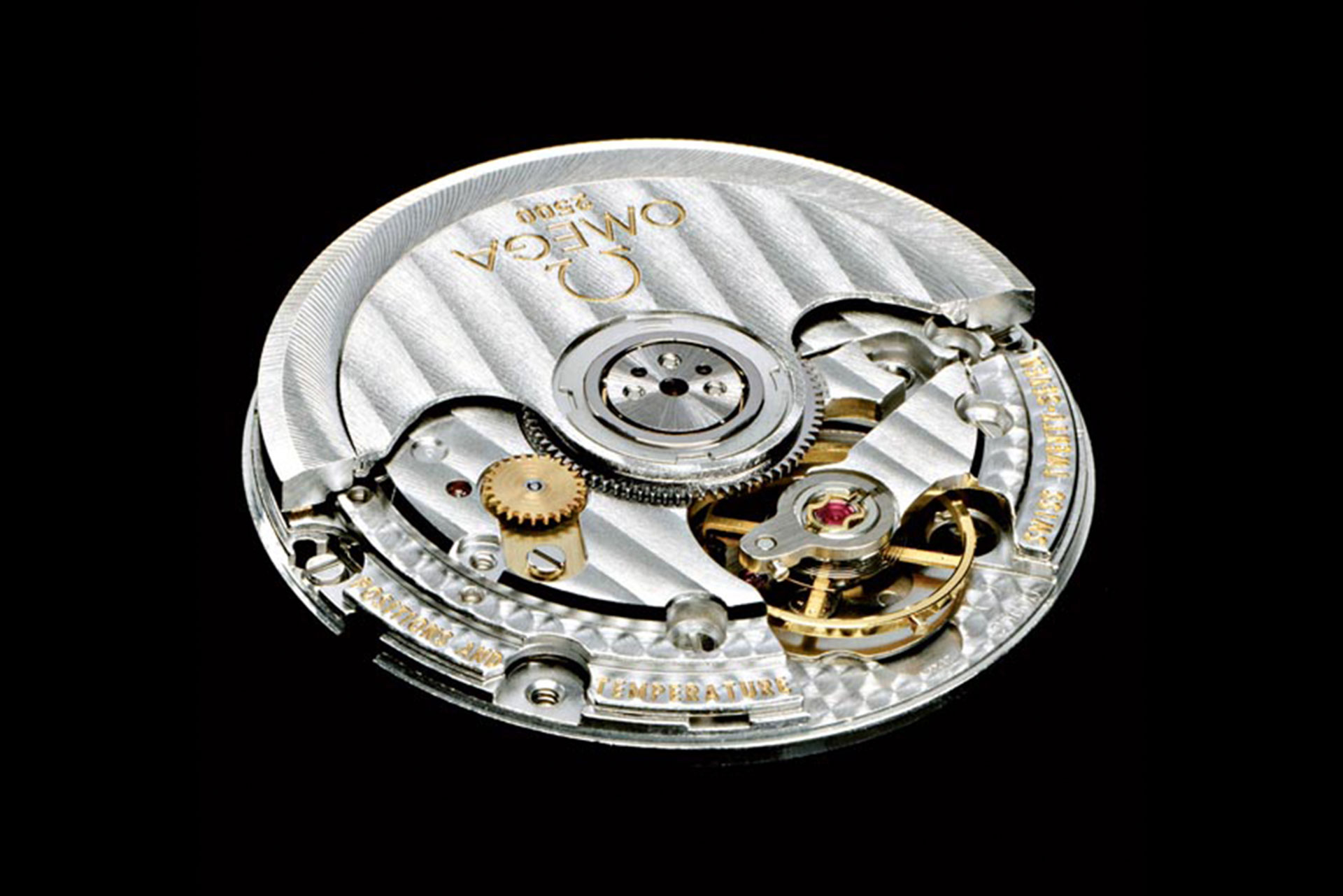
The significance of the fully anti-magnetic calibre – the Co-Axial 8508 – in 2013 and the launch of the Master Co-Axial watches a year later, was and is immense. They introduced a movement that overcame one of the greatest forces of nature and withstood a magnetism of more than 15,000 gauss. To emphasise this feat: that is equivalent to the approximate magnetic load of 85 iPhones.
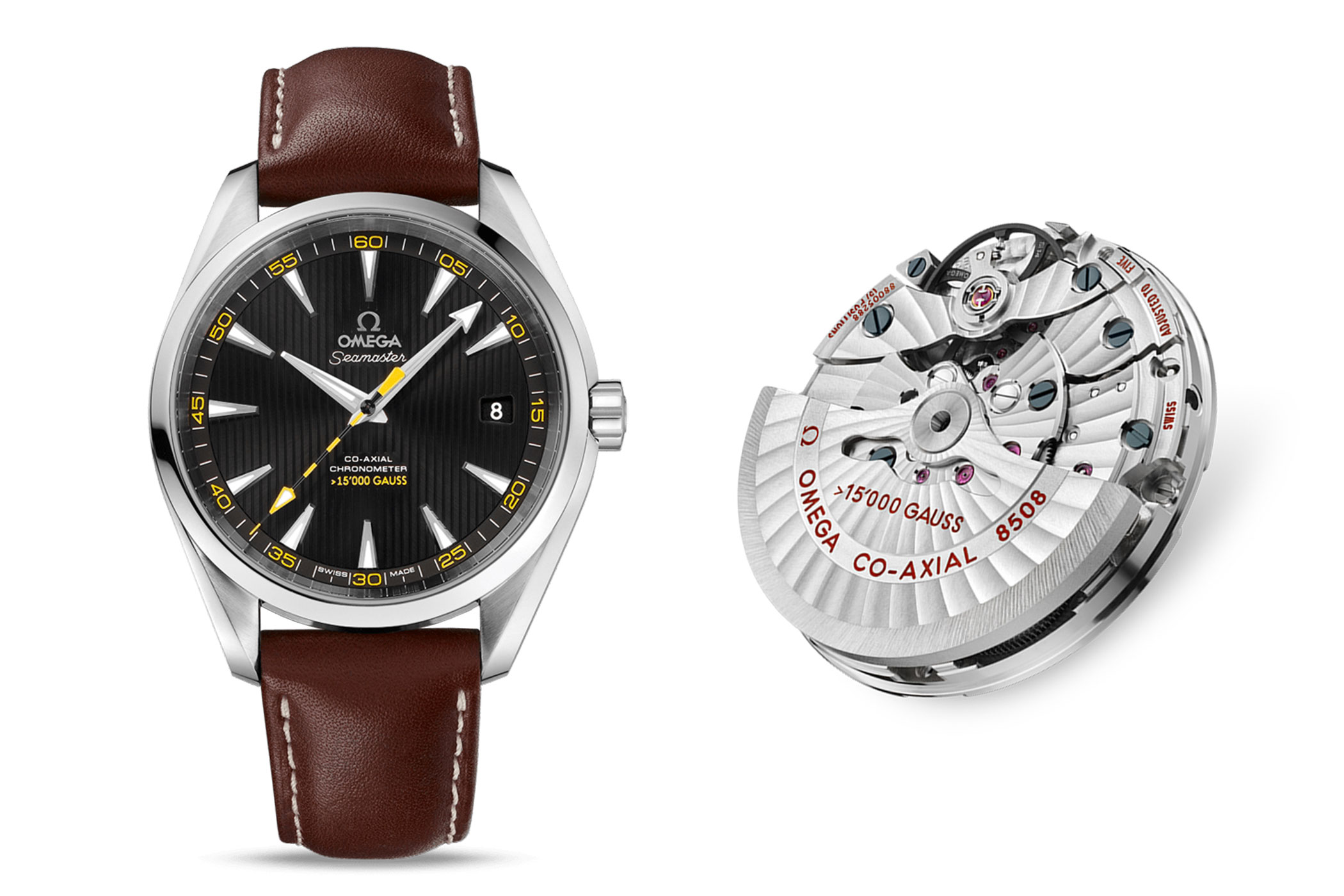
Back to its own roots: the 1932 calibre
But what exactly makes the launch of these two new editions so remarkable? The answer can be found in Omega’s history, which is full of examples of this kind: a newly developed idea succeeds in creating technical innovations. And so is the case this time; the indisputable proof of this is the Calibre 1932, specially developed by Omega.
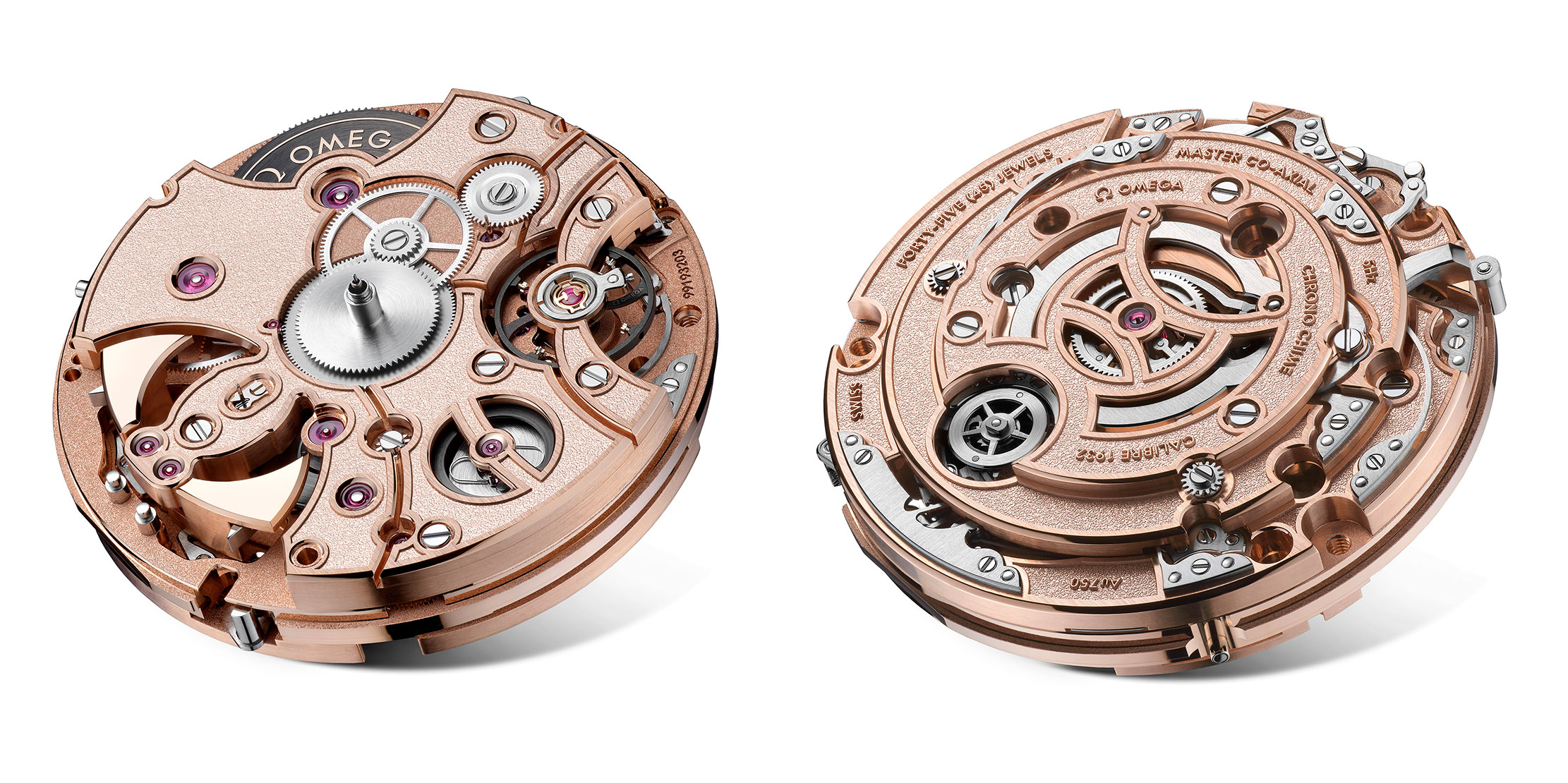
Calibre OMEGA 1932
The Calibre 1932 is an accumulation of convictions and ideas that is unlike anything that has gone before. Seemingly suddenly and without warning, Omega now launched the Calibre 1932, which features the combination of an integrated chronograph and a minute repeater: the first calibre of its kind in the world. This is not just any repeater, though; it displays the elapsed time of the chronograph instead of hours, quarters and minutes.
The design process
The movements already mentioned prepared the ground on which this new idea could sprout. This is evident especially in the design process of the Calibre 1932. Before the conception of the calibre began, the first technical challenge was to increase the frequency of the Co-Axial escapement. Since the Co-Axial escapement developed by Daniels was only designed for a normal frequency – between 3 and 4 Hz – this had to be surpassed in order to display the tenth of a second. To do so, the movement had to beat at a minimum of 5 Hz, in line with the pocket chronographs used at the Olympic Games in 1932.

To give a profile to the idea, the calibre was constructed on two base plates. The first plate contains the traditional movement with the large barrel for the time/ chronograph display and split seconds, the gear wheels and the flywheel facing the dial. The second plate, on the other hand, houses most of the components of the striking mechanism. Finally, between these two plates is the button connection for the chronoscope and the split-seconds mechanism.
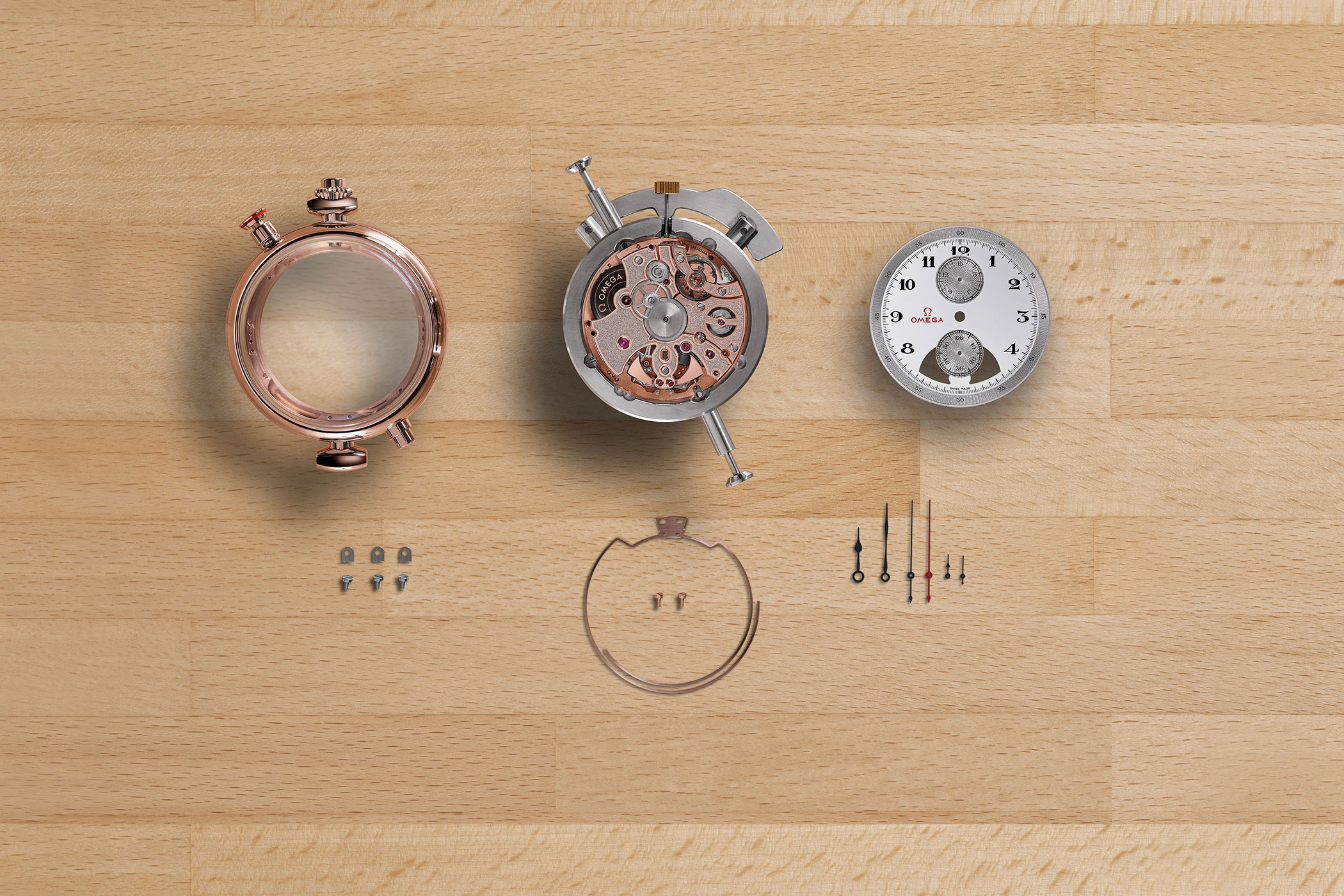
Complex inner workings
The striking mechanism is coupled with the chronograph function, which scans the information on a cam with several levels. The snails (cone-shaped rollers with a spiral-shaped groove) are not connected to the hour/minute function, as is the case with a conventional minute repeater. They are connected to the minute counter to read the minutes, which is the main highlight of the calibre. The chronograph wheel in the middle, which is also connected to the snails, makes it possible to read the centre seconds. On this central second hand there are equally two cams: one snail to measure every ten seconds and another to measure the seconds.
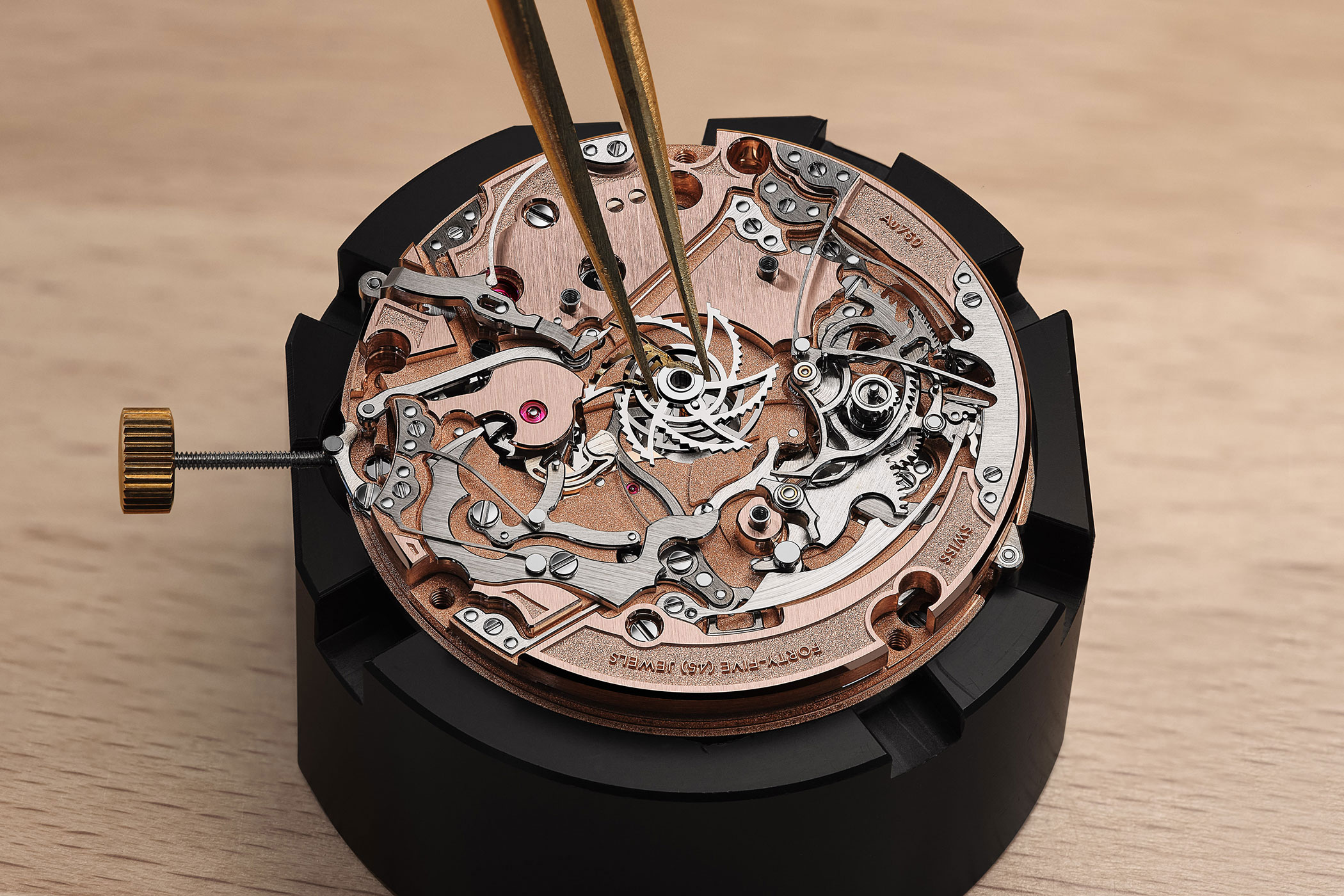
The movement is made up of 575 different components, the special feature being that Omega has been using solid gold for the oscillating weight and the watch bridge since 2007. At the time, the brand drew inspiration from calibres produced in the past, which were given a copper-pink colour by galvanic baths to reflect Omega’s signature colour codes. Continuing this tradition, all key components are made of 18-carat Sedna gold.
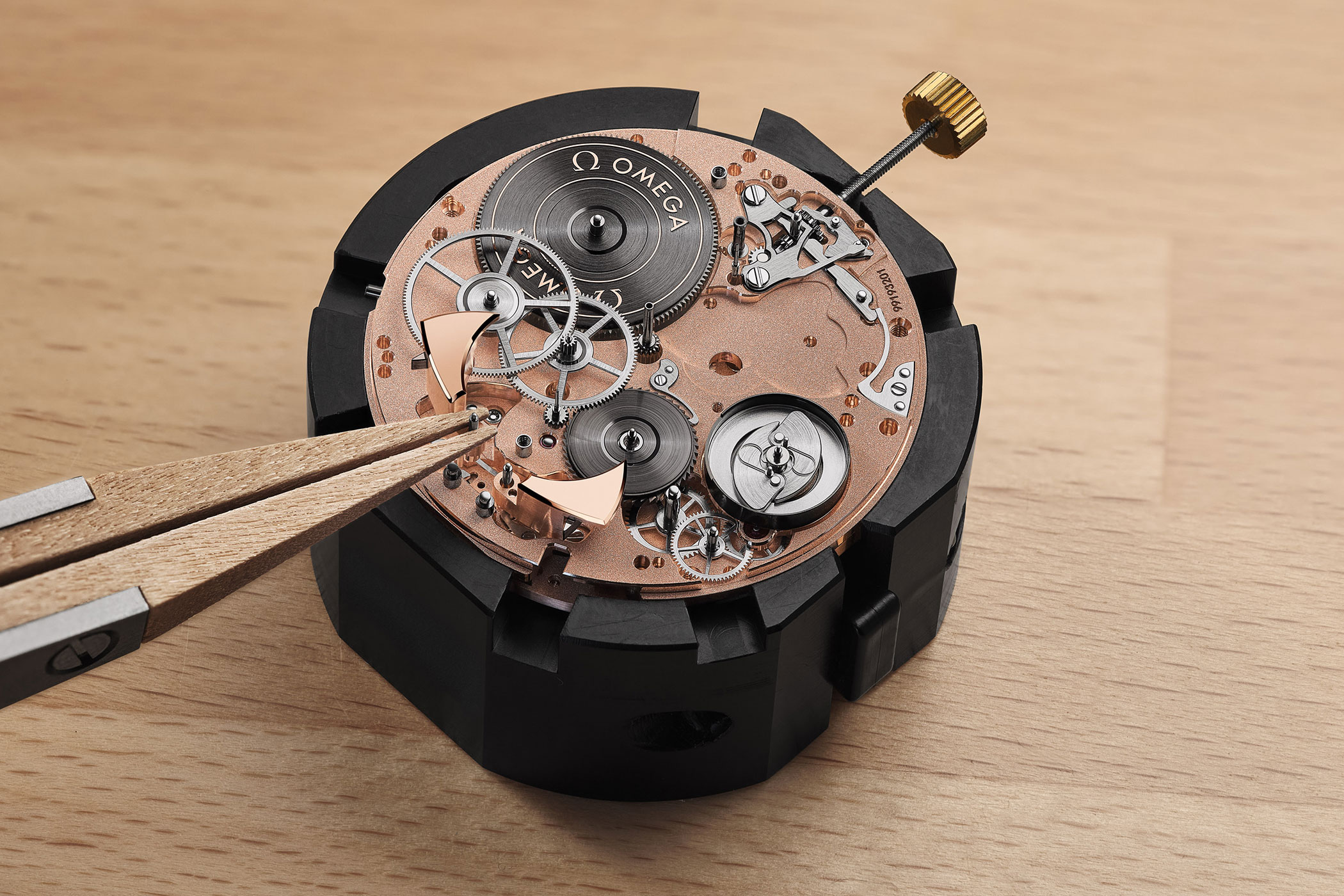
The material shines out particularly beautifully on the double hammers attached to the movement. They strike hand-tuned gongs made of 18-carat Sedna gold in a coherent pitch. Seconds are rung with a high note, minutes with a low note, and ten seconds with a double note.
It is the most complicated calibre Omega has made to date. Thirteen patents were filed throughout its formation, and it took six years to develop with sister company Blancpain. The main difficulty was to find the right balance between persistence and changeability. With the idea of an integrated construction in mind, the column wheel of the chronoscope’s monopusher can assume three different positions with one sequence, for example: start, stop and reset. The Calibre 1932 runs with a power reserve of 60 hours and withstands a magnetic load of up to 15,000 gauss. To complete the composition, the movement with a diameter of 32.5 mm and a height of 9.05 mm is set into the case.
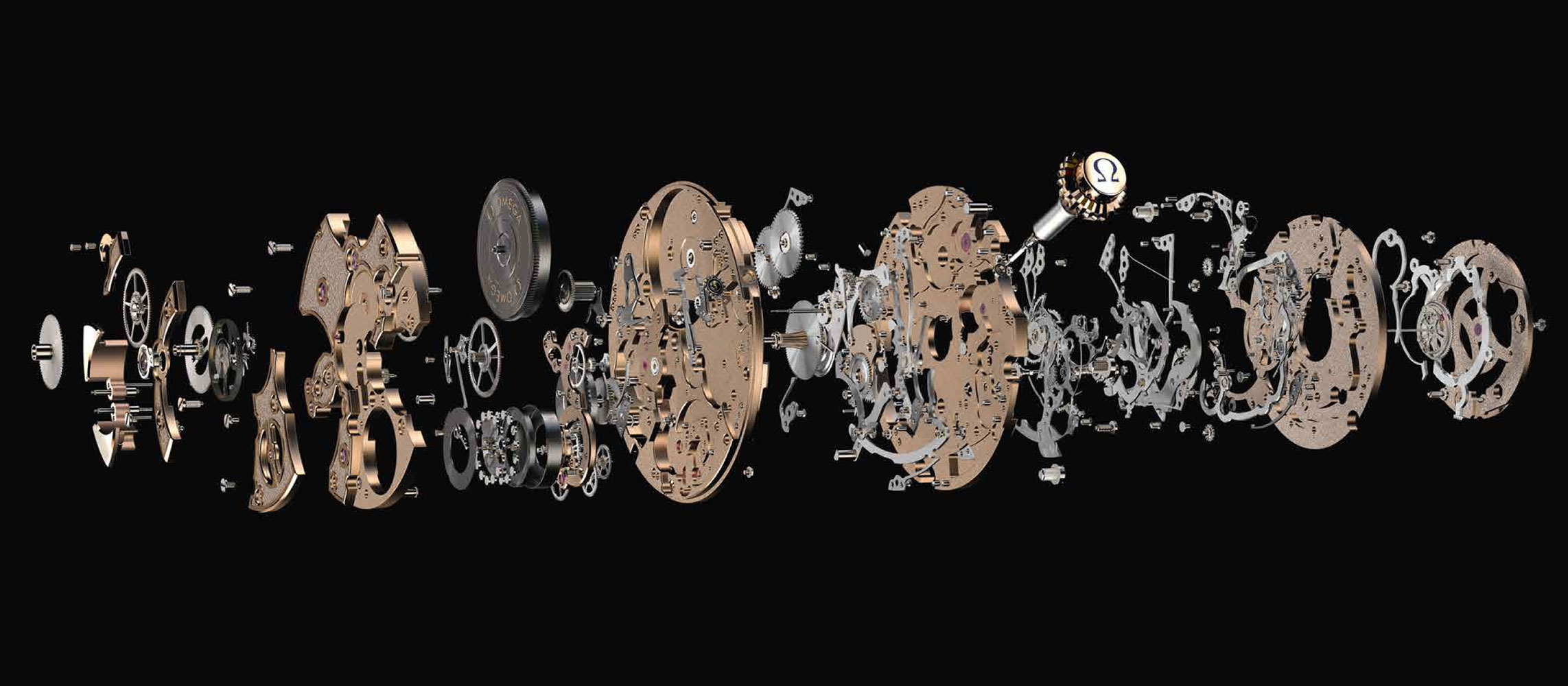
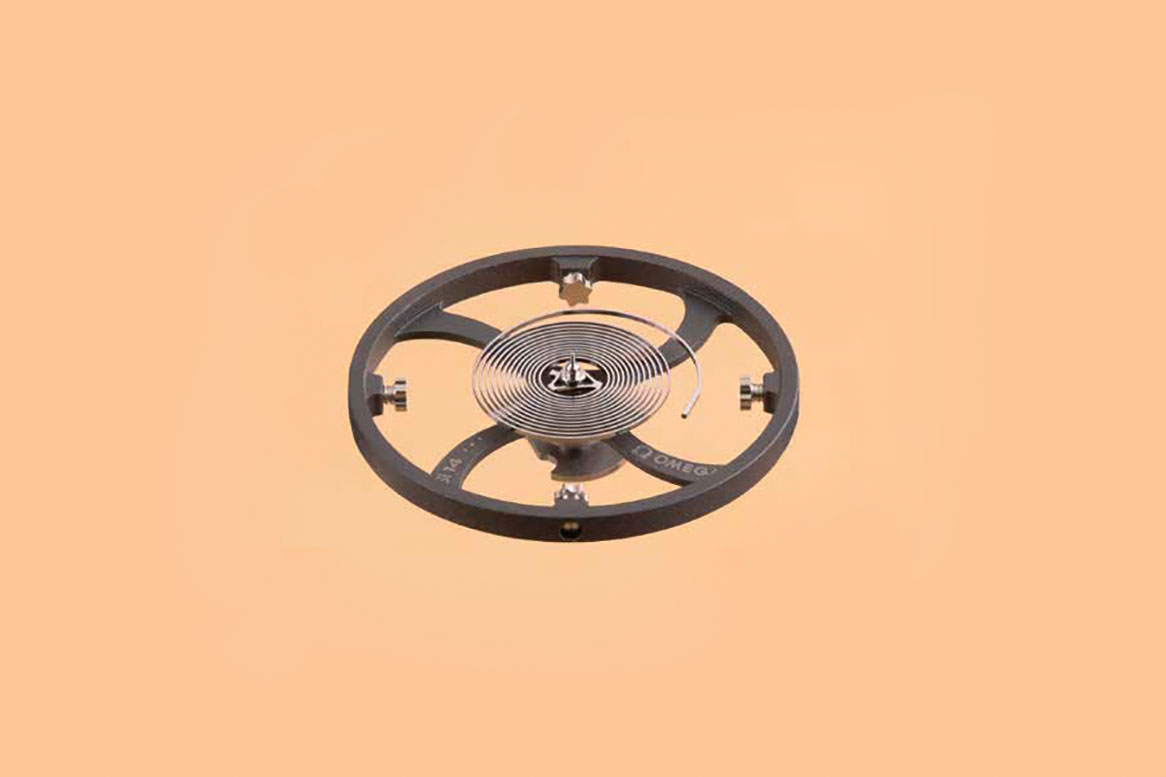
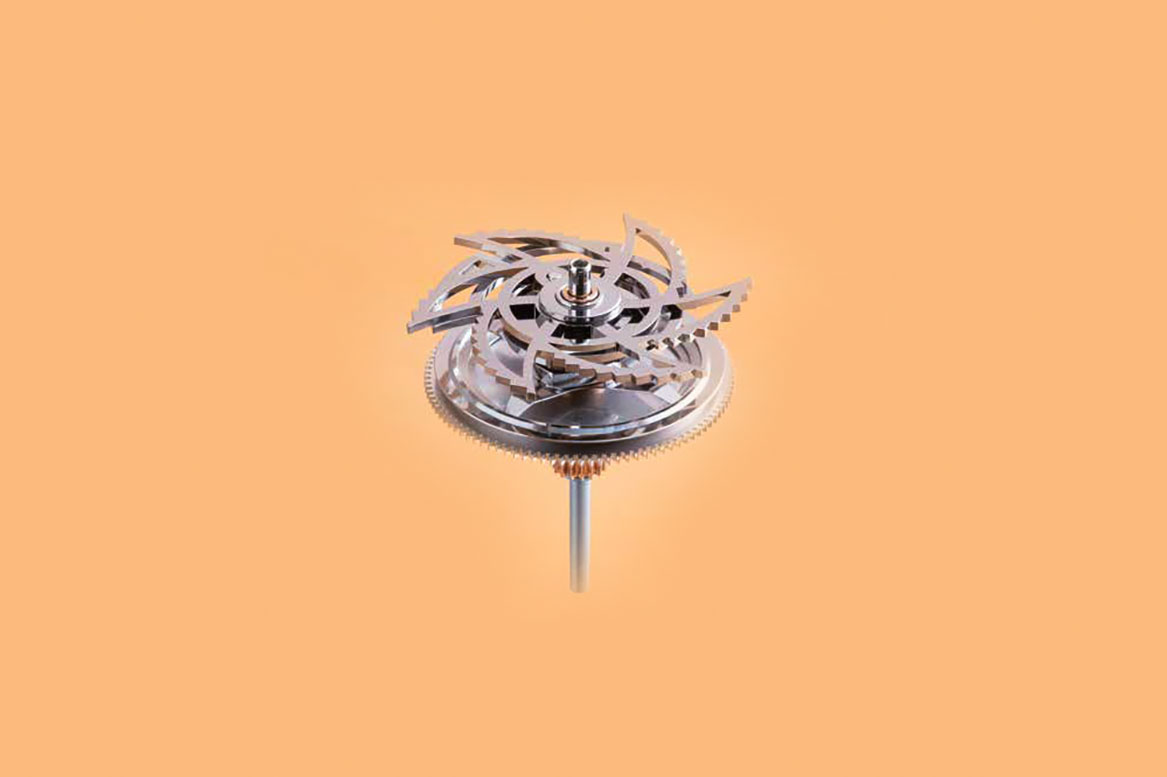
The man behind the movement: Gregory Kissling
As the music ebbs away, the curtains sweep dramatically to one side, and the man behind these watches steps into the light. Gregory Kissling is an incredible engineer and visionary, who has been with Omega for almost two decades. We first met with him back in 2018, when we headed to the manufacture in Biel to do our first CEO Talk with Aeschlimann. Despite his high position and incredible role in the making of the new watches, Kissling is easy-going, down-to-earth – and an absolute encyclopedia regarding Omega’s movements, not least this new complicated Chrono Chime calibre.
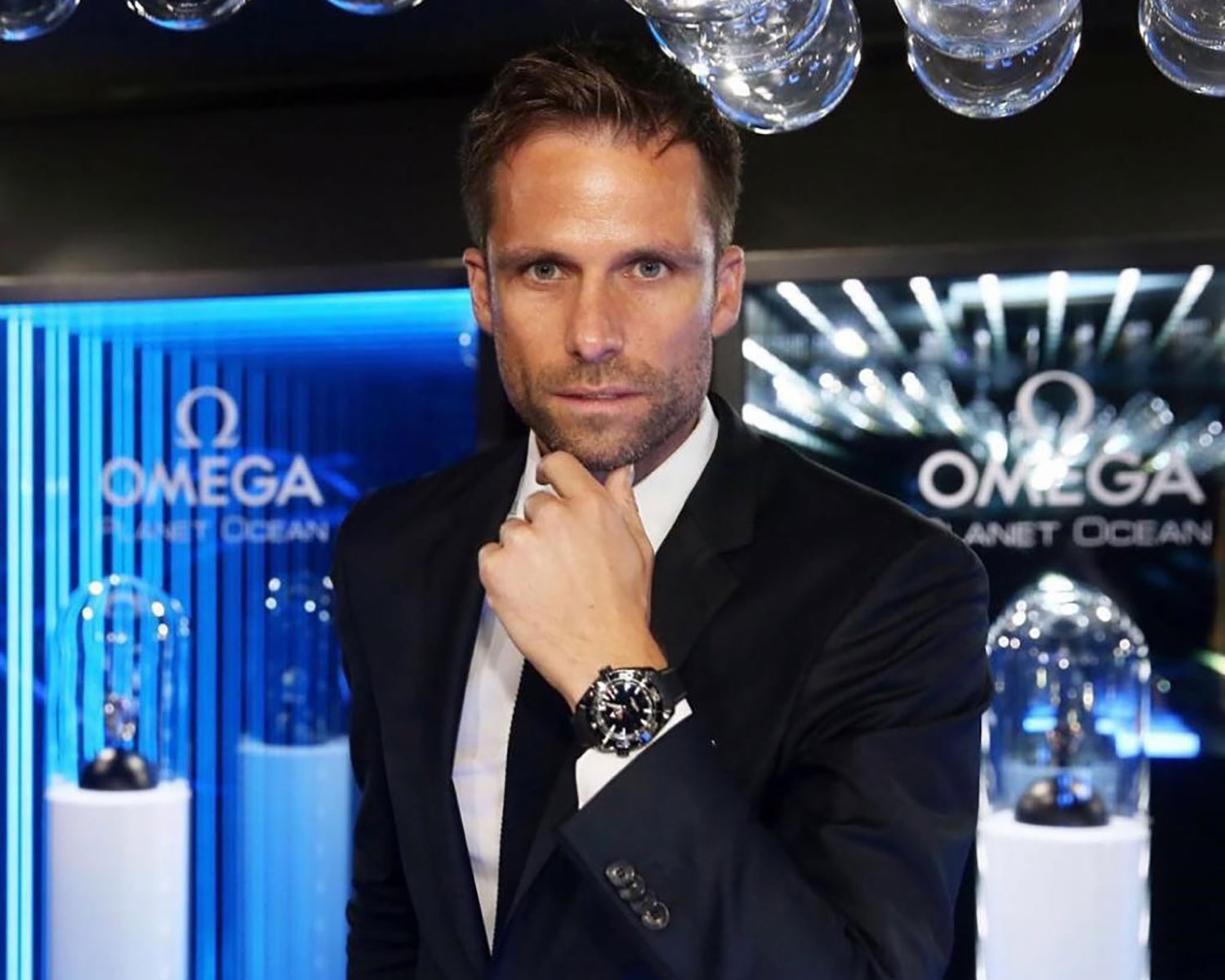
Gregory Kissling – Head of Product Management at OMEGA
Gregory first came up with the idea of combining two complications, never before used together, back in 2016. Its creation has been six years in the making. Even now, there are only two existing prototypes – and only one watchmaker with the ability to create more. A second specialist watchmaker is currently being trained to do the same.
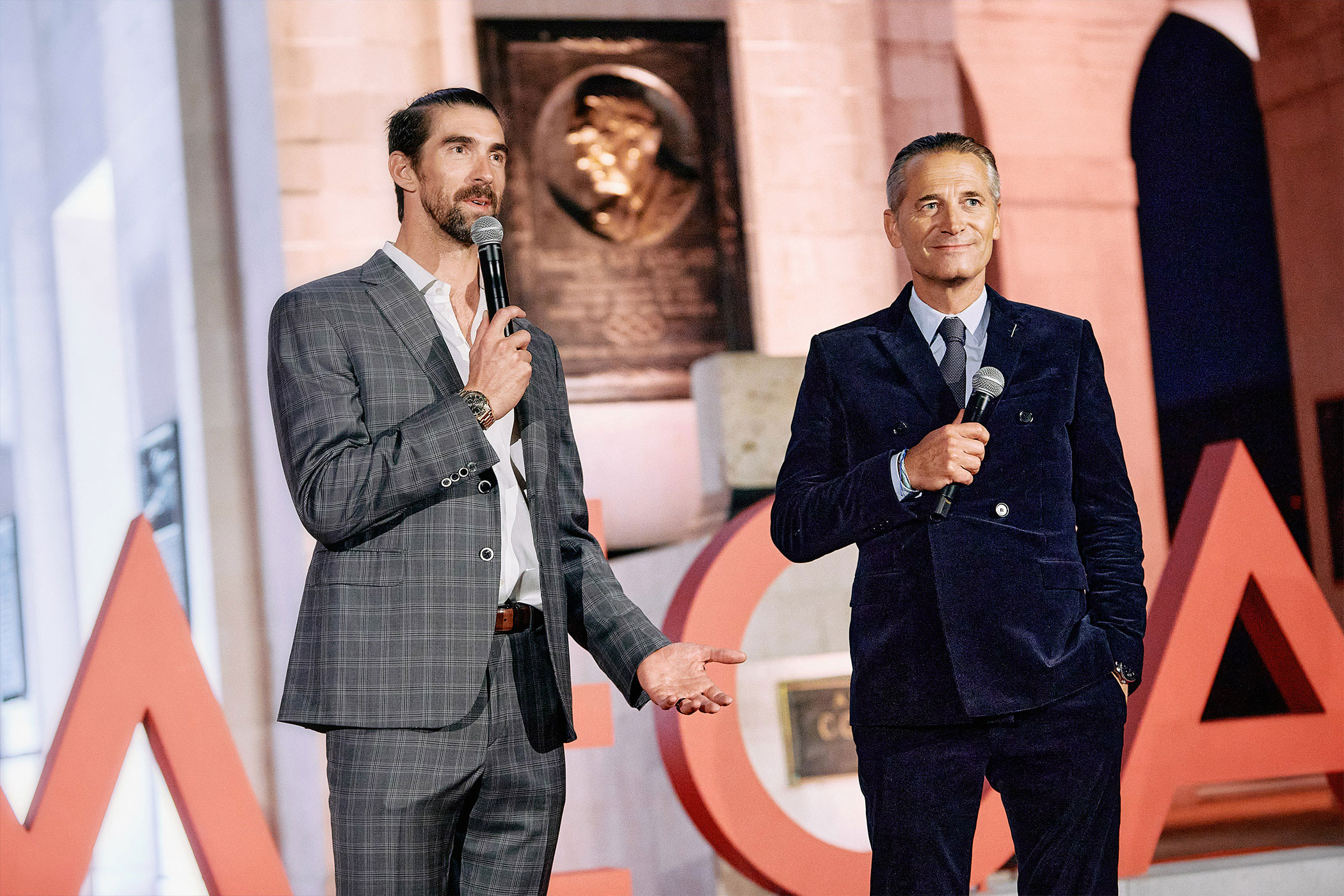
Michael Phelps (left) and Raynald Aeschlimann (right)
With these two watches, Kissling wanted to demonstrate the competence of Omega’s in-house high watchmaking team, while keeping a strong Omega DNA present in terms of design and aesthetics. Kissling knew that these pieces would have the ability to transmit the entire philosophy of the company to the world: from its pioneering spirit and historic moments to working with top athletes over the decades – one of whom, present at the Chrono Chime launch, is none other than the King of the Olympic Games, Michael Phelps. While Kissling is the man behind the watches, however, it is CEO Aeschlimann who holds the key to the tale of how these special timepieces came about.
Raynald Aeschlimann on the Chrono Chime duo
Working with the Swatch Group
Reunited following our arrival in LA, we sit down with Raynald Aeschlimann to learn more about these wholly unexpected timepieces. The CEO of Omega gives us an insight into what went on behind the scenes throughout the creation of this special duo of watches – including the dynamics and input from the Swatch Group, of which Omega comprises one of the most formidable watchmakers.

Raynald Aeschlimann – Omega CEO and President
From the very beginning, says Aeschlimann the manufacture was fixated upon creating a complication that would be starkly ‘Omega’, from the complication right down to the finishing. ‘It had to be ‘Omega’,’ he declares simply. Despite this, the horology house worked closely with its sibling brands within the Swatch Group when conceiving and creating the 1932 calibre. ‘Working on the minute repeater calibre with Blancpain, it was really an intense exercise in watchmaking for everyone – but it was dedicated to Omega. We worked with the engineers and watchmakers using one of our movement factories from within the Swatch Group. This collaborative working set-up gave us access to a great amount of knowledge and working to levels of absolute perfection.’
The watches: In the metal
The Speedmaster
Before getting to know the Speedmaster Chrono Chime, it’s worth nothing that unlike its sibling, this timepiece follows the design blueprint of what is surely Omega’s best-known model. Omega’s legendary Speedmaster was created in 1957. With no idea of its destiny as a future ‘Moonwatch’, the watch was initially conceived for motor racing, forming part of a professional trio alongside the still-popular Seamaster and the lesser-known Railmaster. The Speedmaster, famously the first watch on the Moon and present for five other landings, accompanied NASA crew members on numerous historic missions, from Gemini and Apollo to Skylab and Shuttle. Its history represents a beautiful thing: complete trust in micro-engineering and watchmaking, to the point of life or death (as proved to be the case on the dramatic Apollo 13 mission).
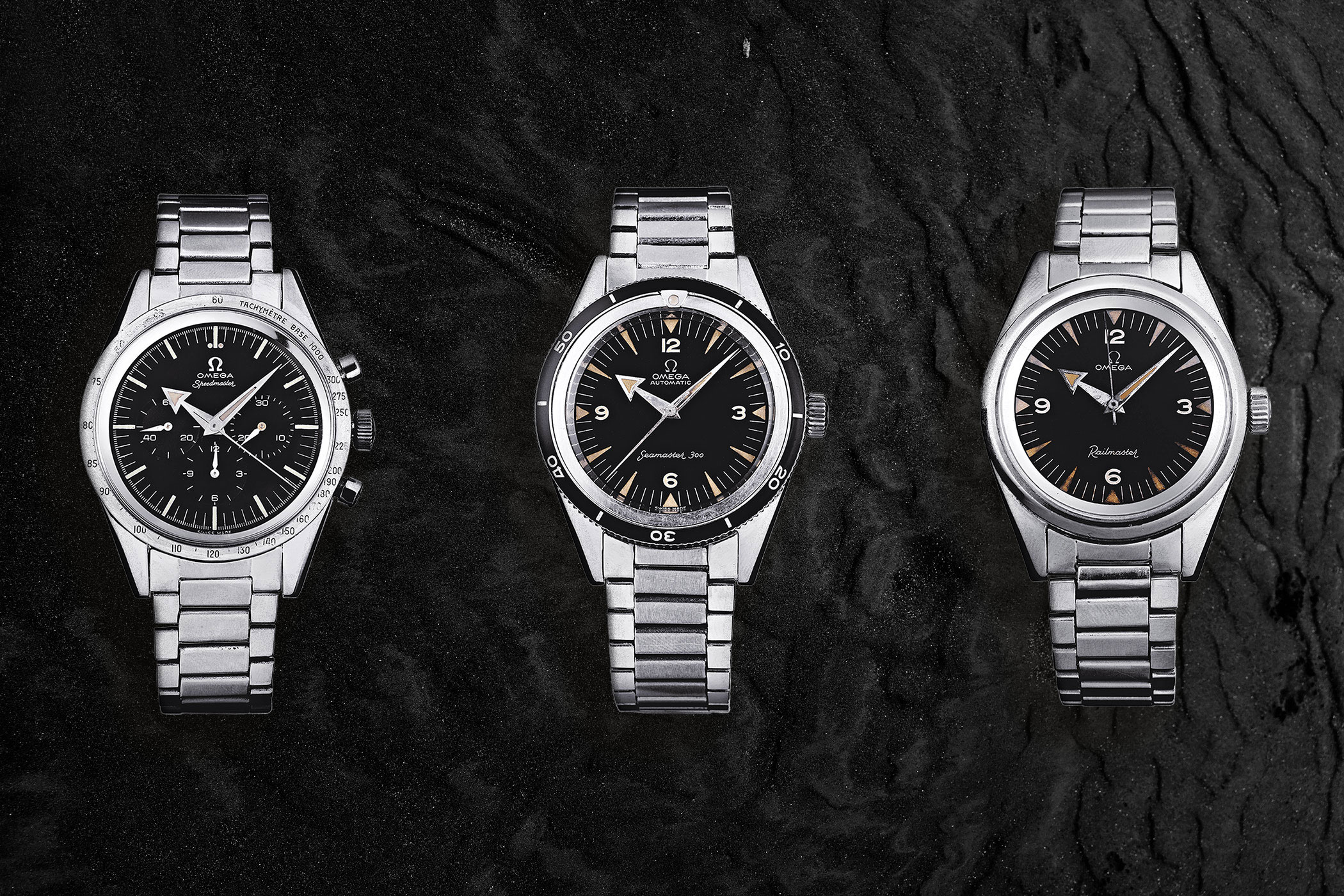
The Speedmaster Chrono Chime Co-Axial Master Chronometer Chronograph 45 mm
The Speedmaster Chrono Chime has some incredible and unusual characteristics that are well worth discussing. The aesthetic codes of the Speedmaster Chrono Chime case and hands are from the CK 2998 model from 1959, the second generation Speedmaster worn by astronaut and aviator Walter Schirra: recognisable by its straight, symmetrical lugs and black bezel. Noteworthy aspects include the 18-carat Sedna Gold case inspired by the CK 2998, a dial in blue aventurine enamel, as well as guilloché inner bezel and subdials in Omega’s unique “exclusive acoustic waves” pattern. It’s well worth taking a closer look at the production process this rare watch undergoes.
Making Of: The Speedmaster Chrono Chime
Aventurine
The dial of this Speedmaster utterly dedicates itself to the stars, with the dominating feature at first glance being the entrancing blue aventurine dial, evoking a night sky. Watches with aventurine dials are always breath-taking, and we’ve seen a few in recent years, from Jaeger-LeCoultre’s celestial Rendez-Vous Dazzling Star to A Lange & Söhne’s Saxonia Thin masterpiece. Omega, too, already has experience with aventurine dials, having produced a special Speedmaster Blue Side of the Moon edition.
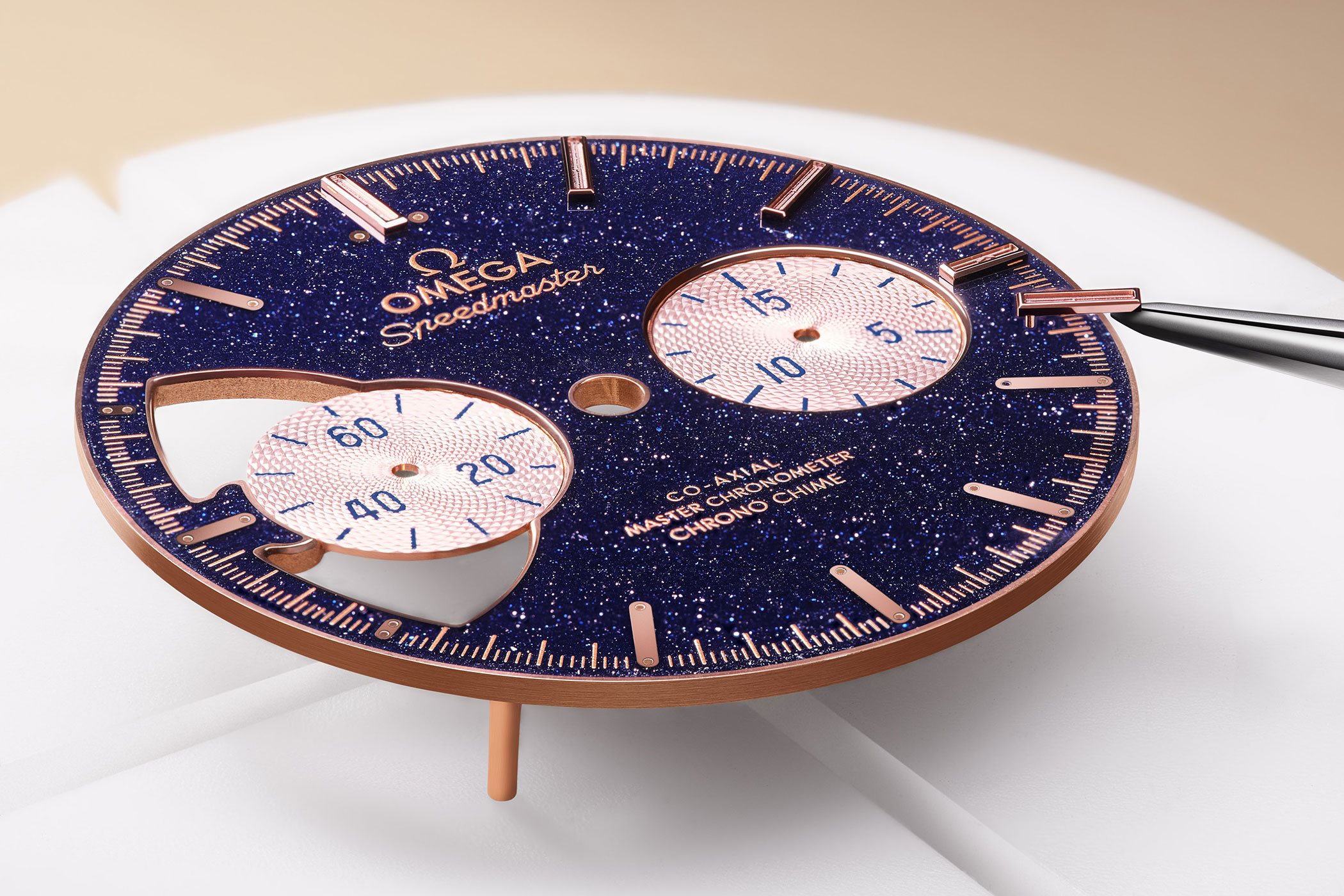
Aventurine glass was first conceived by Murano glass makers and has been used since the 18th century. Glittering, minuscule crystals inhabit the translucent material, creating the effect of a starry night sky. However, the material presented a challenge to Omega given the aventurine dial’s fragility – not a characteristic that is otherwise associated with the Speedmaster. To tackle this issue, the horology house conceived a new technique, which is currently awaiting its own patent. In the same way as a traditional craftsman grinds down minerals for a traditional enamel dial, the craftsmen at Omega grind a block of aventurine glass into a powder, before mixing it to create a solution that can be painted onto the dial. The end result is a smooth, almost lacquered effect.
Decoration
However, another story lies beneath the fired enamel dial. Before being decorated, the dial is engraved around the raised hour circle using a champlevé technique. This complex craft involves cutting away miniature parts of the metal plate before filling the depressions it creates with the enamel. This aventurine is applied also to the single push-button and bezel using a fine-tipped brush.
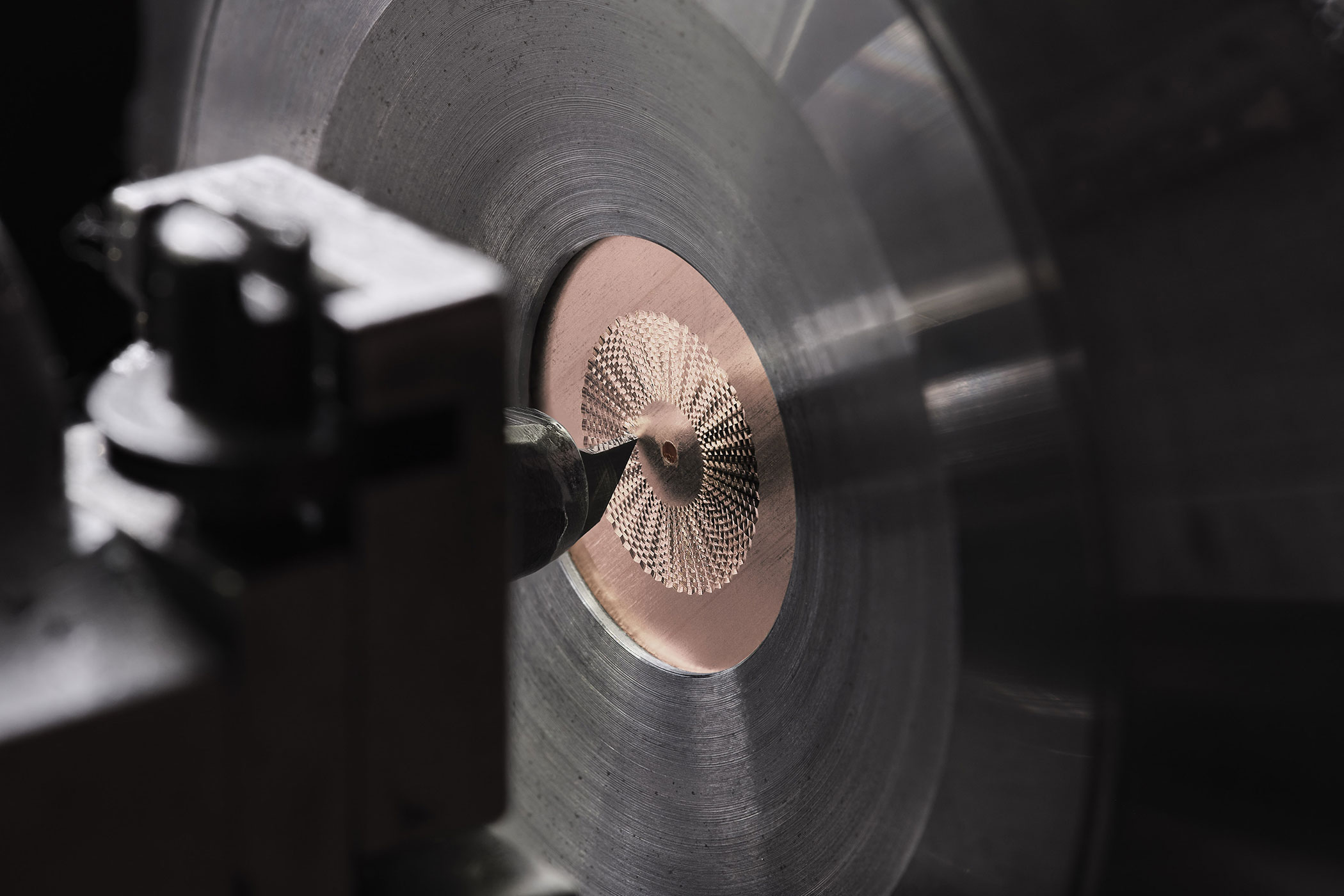
Likewise, the tachymeter bezel, also with a gold base, is laser-ablated to obtain the matching champlevé tachymeter. Against this dark glittering dial and bezel, the two handmade guilloché gold subdial counters and flange shine brightly. However, unlike your classic Speedmaster dial, the subdial counter at 3 o’clock is a 15-minute counter, as opposed to 30 minutes. This is a nod to Omega’s first wristwatch chronographs from 1913, which housed the column-wheel controlled 18’’ CHR calibres.
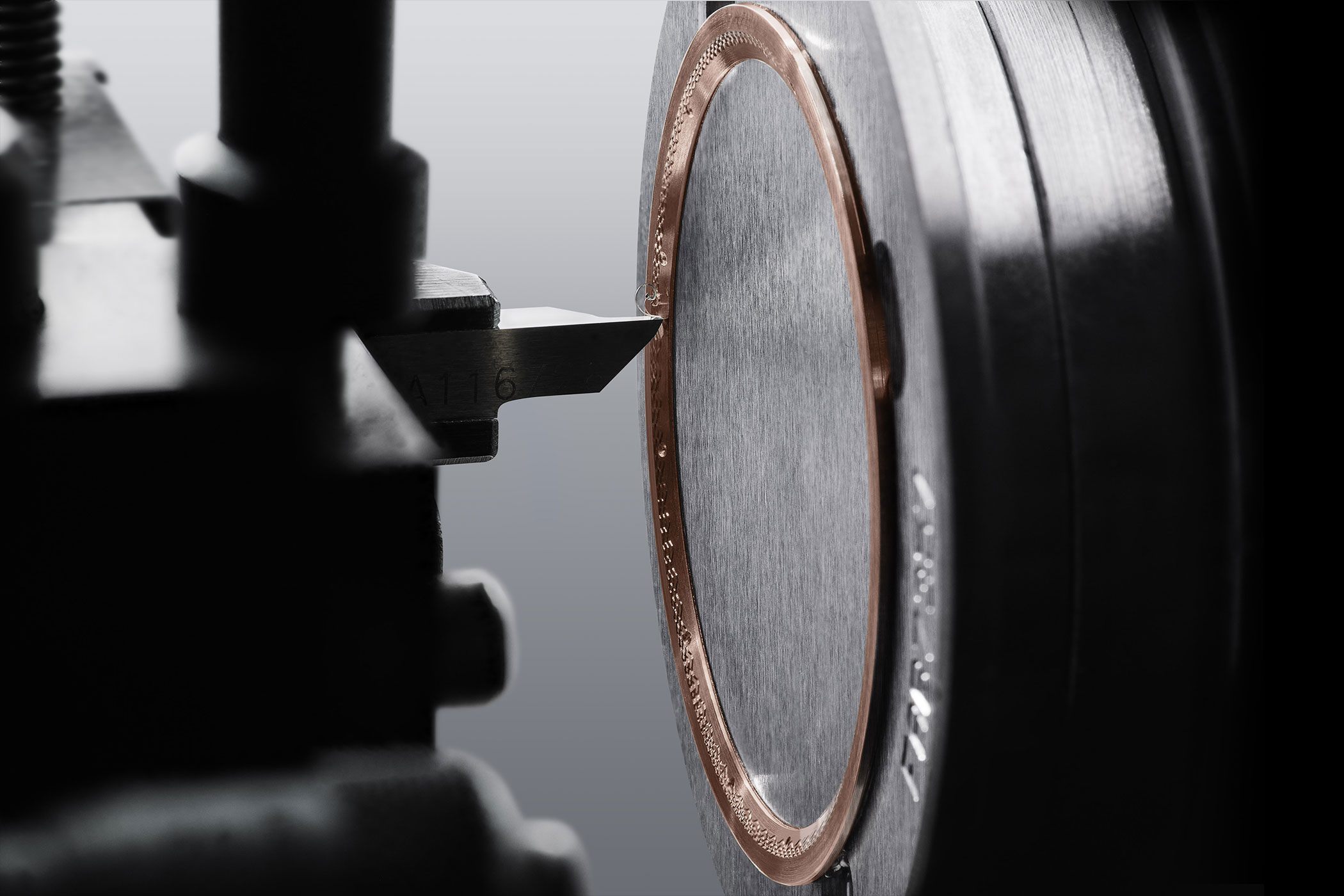
Displaying the minute repeater and chronograph
The subdial counters also stand out thanks to their new guilloché wave design, transcending the typical design codes of the Speedmaster. This motif was designed specially to leave behind the typical DNA of the Moonwatch and bring an entirely novel, unique decoration to the model. The result is a specially designed ‘sound wave’ pattern, which pays homage to the grand complication within.
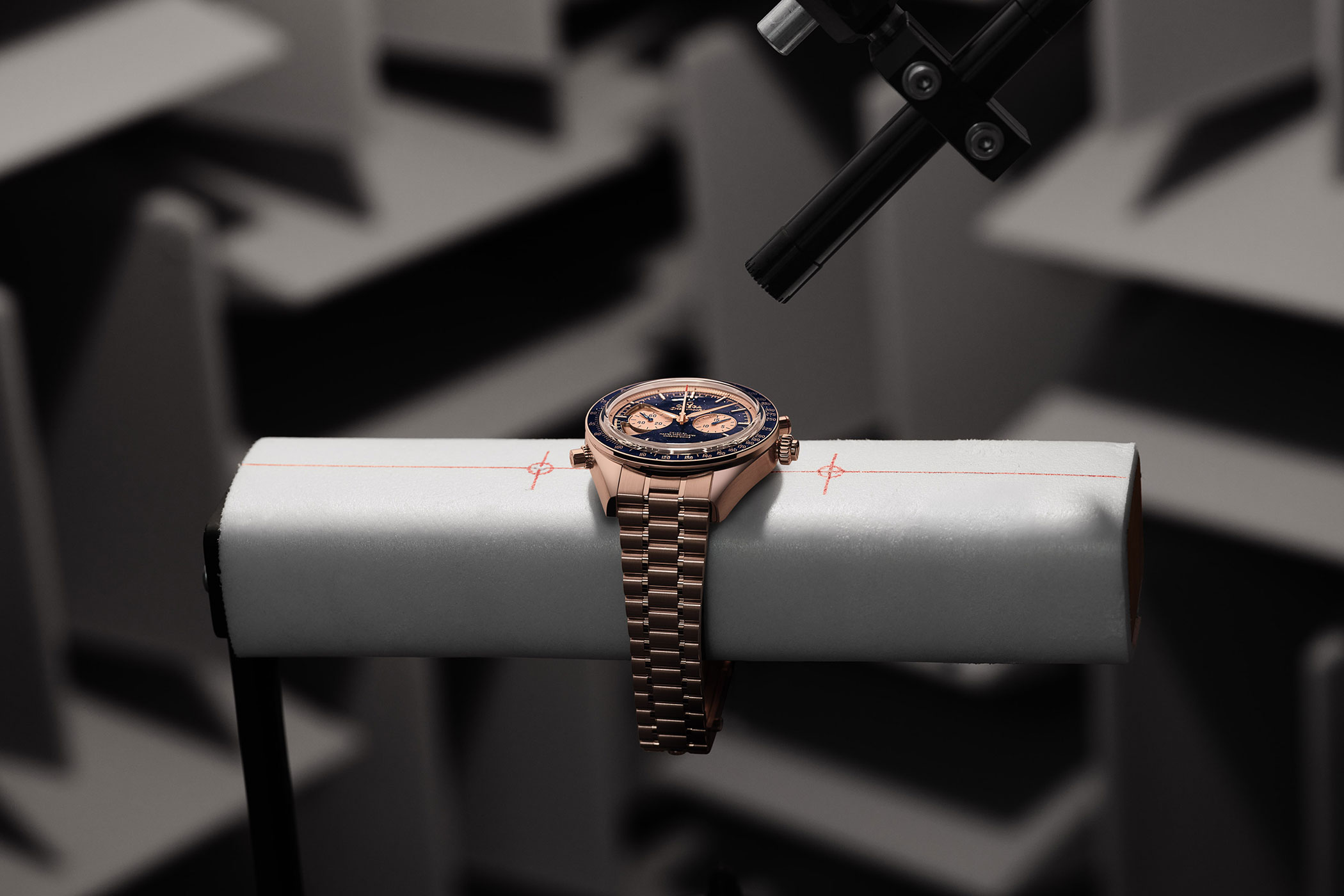
The chiming gold hammers sounding the minute repeater are visible at 9 o’clock, nestling on either side of the small second counter. The windows revealing the two hammers were made using a water jet cutting technique, as this is the only way to prevent the sensitive enamel material on the dial from burning. Water jet cutting is essentially an accelerated erosion process, which involves firing water through a ruby or diamond nozzle into a mixing chamber, where the sand and water can combine. Thus, the pressure results in the creation of a vacuum, which draws abrasive sand into the stream. This can then be fired at the dial, allowing the windows for the hammers to be cut out.
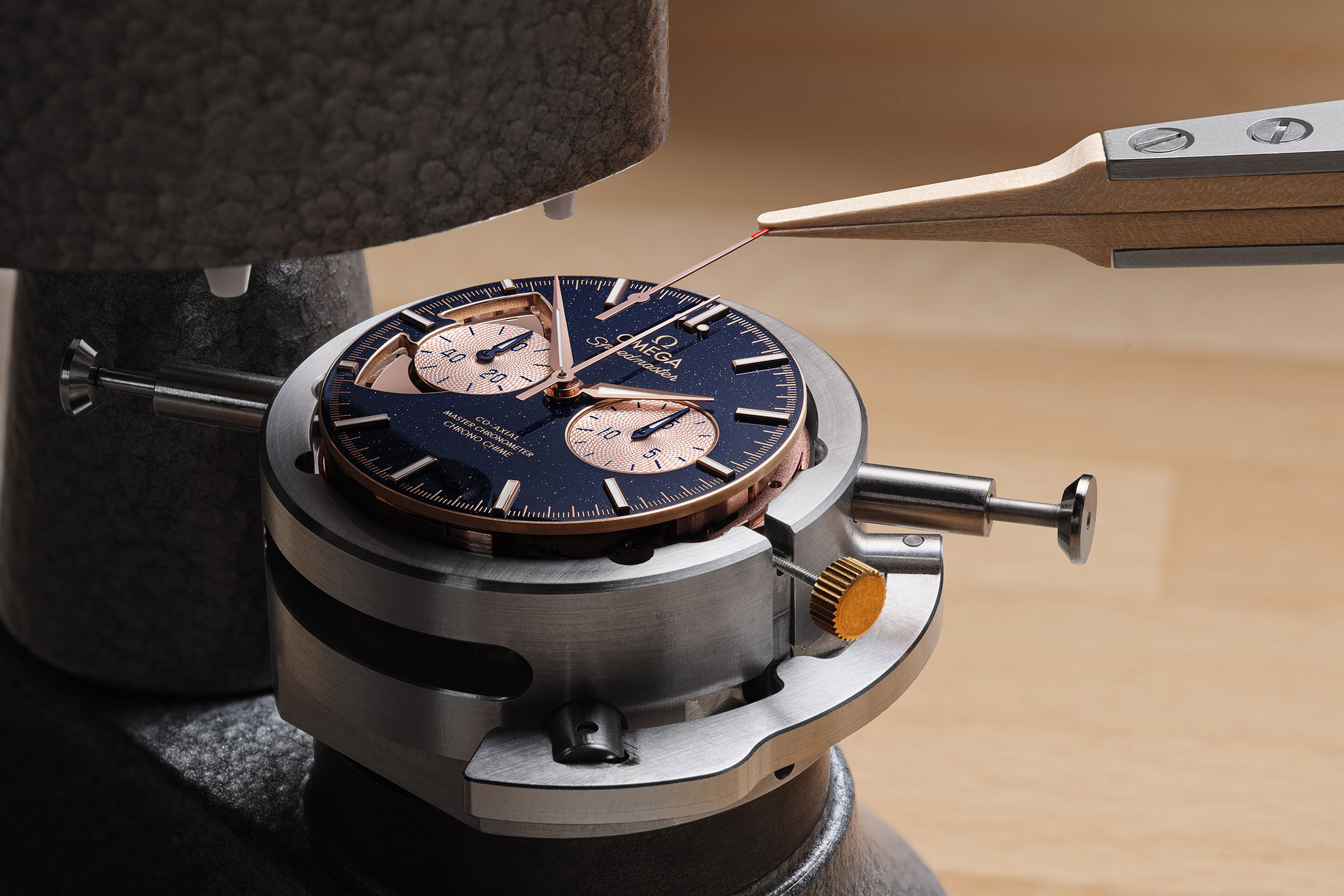
Speedmaster Chrono Chime: The bracelet
This isn’t just any Speedmaster bracelet: this is the famous bracelet that Omega collectors will instantly recognise as the ‘Nixon’. In celebration of the first moon landing and Omega’s role in the excursion, the manufacture produced its first ever gold Speedmaster, as a gift for the eponymous American President Nixon.
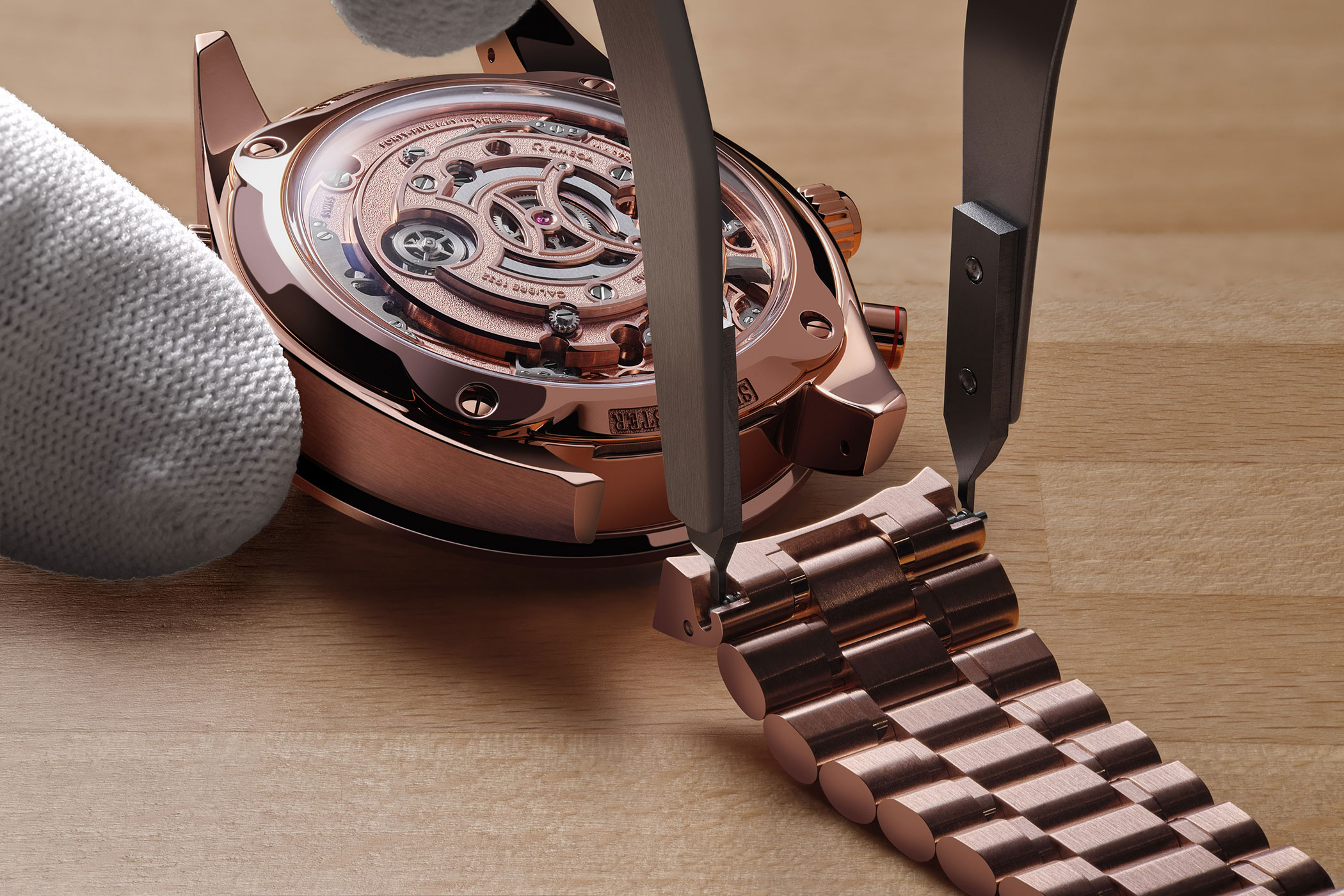
The watch in the metal: wearability
The Speedmaster Chrono Chime glows in gold – Sedna Gold, to be precise (the qualities of which we will elaborate on a little later). The watch features a gold case, gold bracelet, and highly complicated movement using the same gold material for its components. Unsurprisingly, this is an extremely heavy watch. While an Omega Speedmaster Co-Axial Master Chronometer Moonphase, for example, already weighs a fairly hefty 183 grams, this 45.5 mm Speedmaster is almost twice as heavy, likely weighing about 250 to 300 grams.
Making of: The Olympic Chrono Chime
Omega was not only the first to produce a minute repeater for the wrist but also the first watch manufacture to become Official Timekeeper for the Olympic Games. The Omega Olympic Chrono Chime, a contemporary watch with a historic spin, unites these two achievements. Bridging the gap between its first minute repeater (created by the manufacture’s founder, Louis Brandt, in 1892) and the pocket chronographs used at the 1932 Olympic Games in Los Angeles, its design bears characteristics of timepieces created in the transitional period when people were switching from pocket watches to wristwatches.
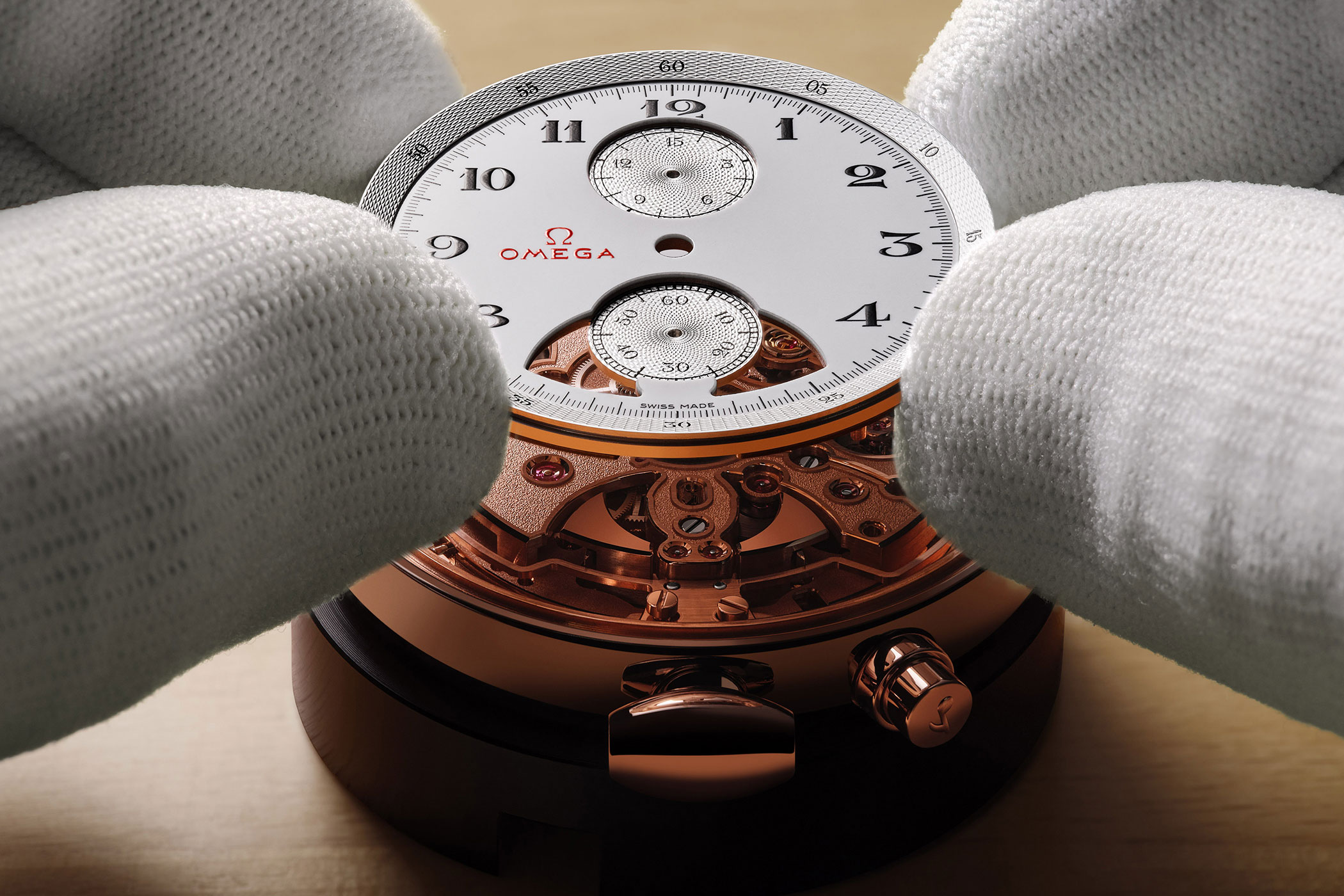
Exquisitely decorated, from the enamelled aventurine-set crown and dial to the lugs and curvaceous sapphire crystal, Omega collaborated with its partners within the Swatch Group in order to create something that could showcase traditional craftsmanship, while remaining highly innovative. It is these two factors that really define the DNA of this watch.
Creating the enamel dial
In line with this, let’s begin looking at the Olympic Chrono Chime by discussing the Grand Feu enamel dial. Creating Grand Feu enamel dials is no easy feat. Even prestigious Swiss watchmakers often simply use external suppliers.
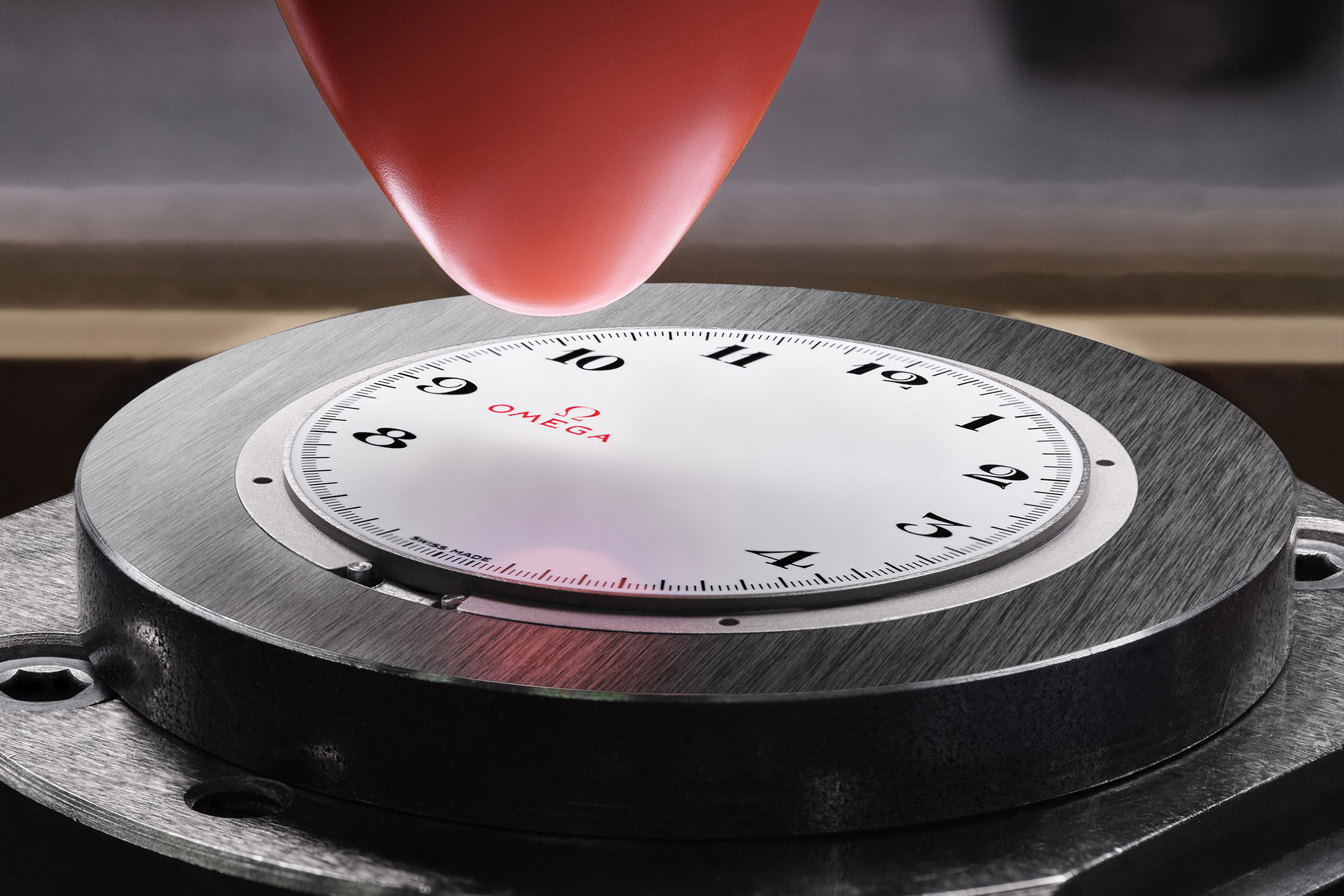
Working with an 18-carat white-gold base, an artisan brushes layers upon layers of enamel. This is then fired in an oven with a temperature of over 800 degrees. It’s a risky game: many enamel dial bases must be discarded due to bubbles and cracks – even the slightest change in colour also means a dial must be cast aside. The result is an eternally (literally, the tone does not alter over time) silky smooth pure white dial.
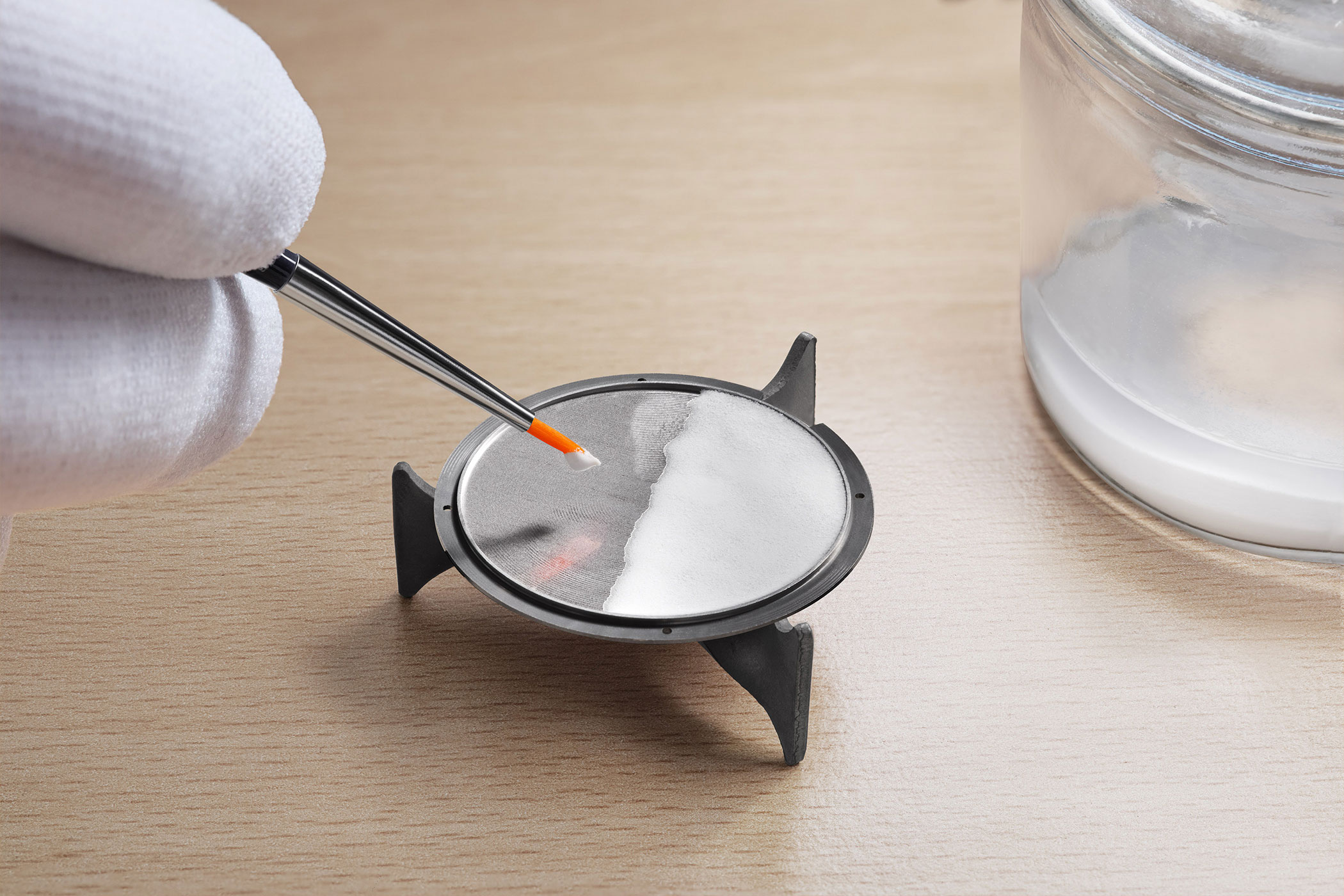
In order to add the hour circle transfers and old-school red Omega symbol, the equally complex Petit Feu technique is used, this time at over 700 degrees. As is the case with the Speedmaster Chrono Chime, the chamfered windows revealing the hammers are created using a water-jet cutting technique.
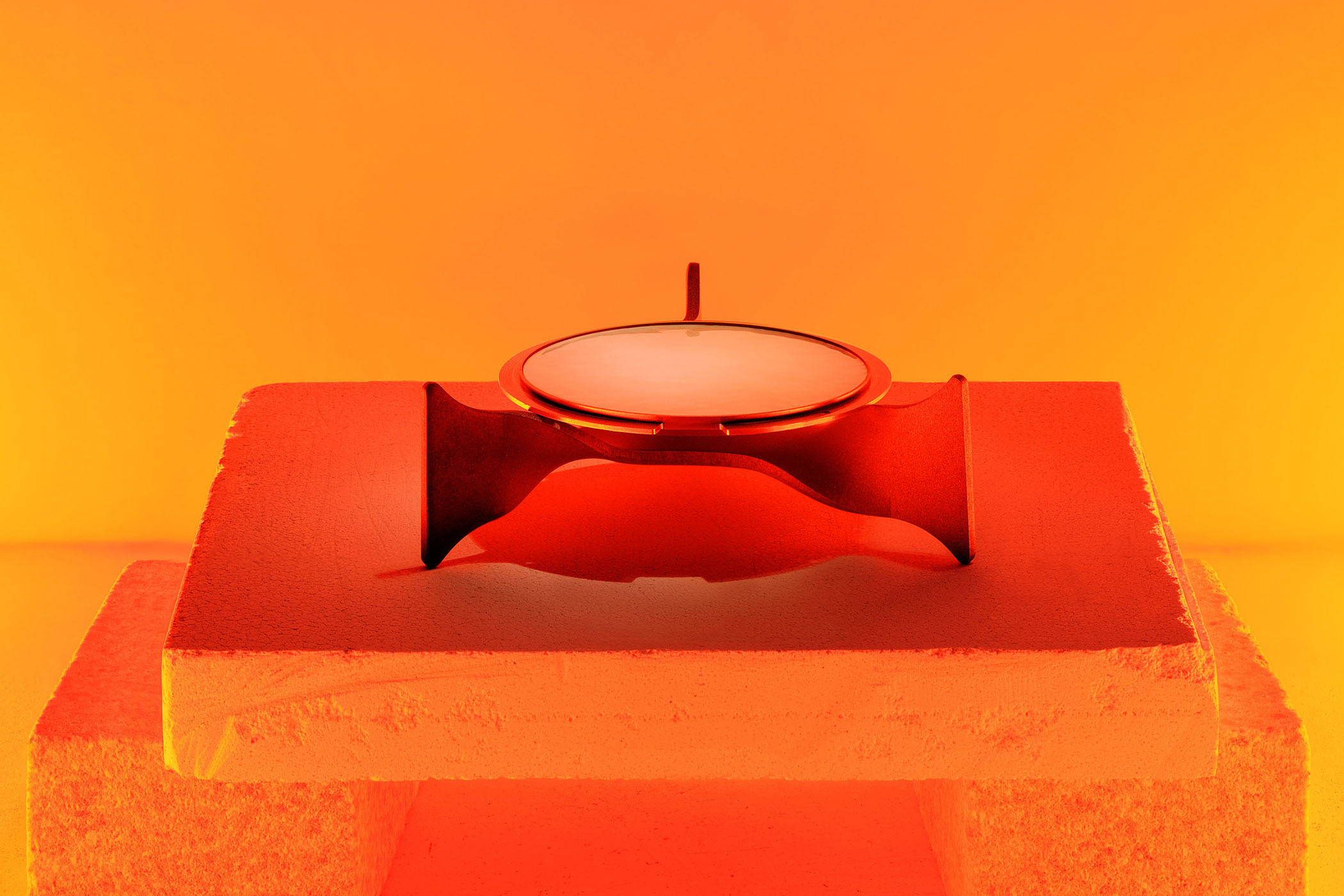
Decoration
Omega spare no details on the finer points of decoration, either. The 925-silver flange framing the dial, as well as the two silver subdial counters at 6 and 12 o’clock, feature a guilloché pattern done by hand, with the same wave motif as on the Speedmaster. Likewise, the timepiece again picks up on the manufacture’s first chronographs from 1932 by displaying 15 rather than 30 minutes on the subdial counter. To protect this phenomenal dial, Omega employs an old-school domed sapphire crystal.
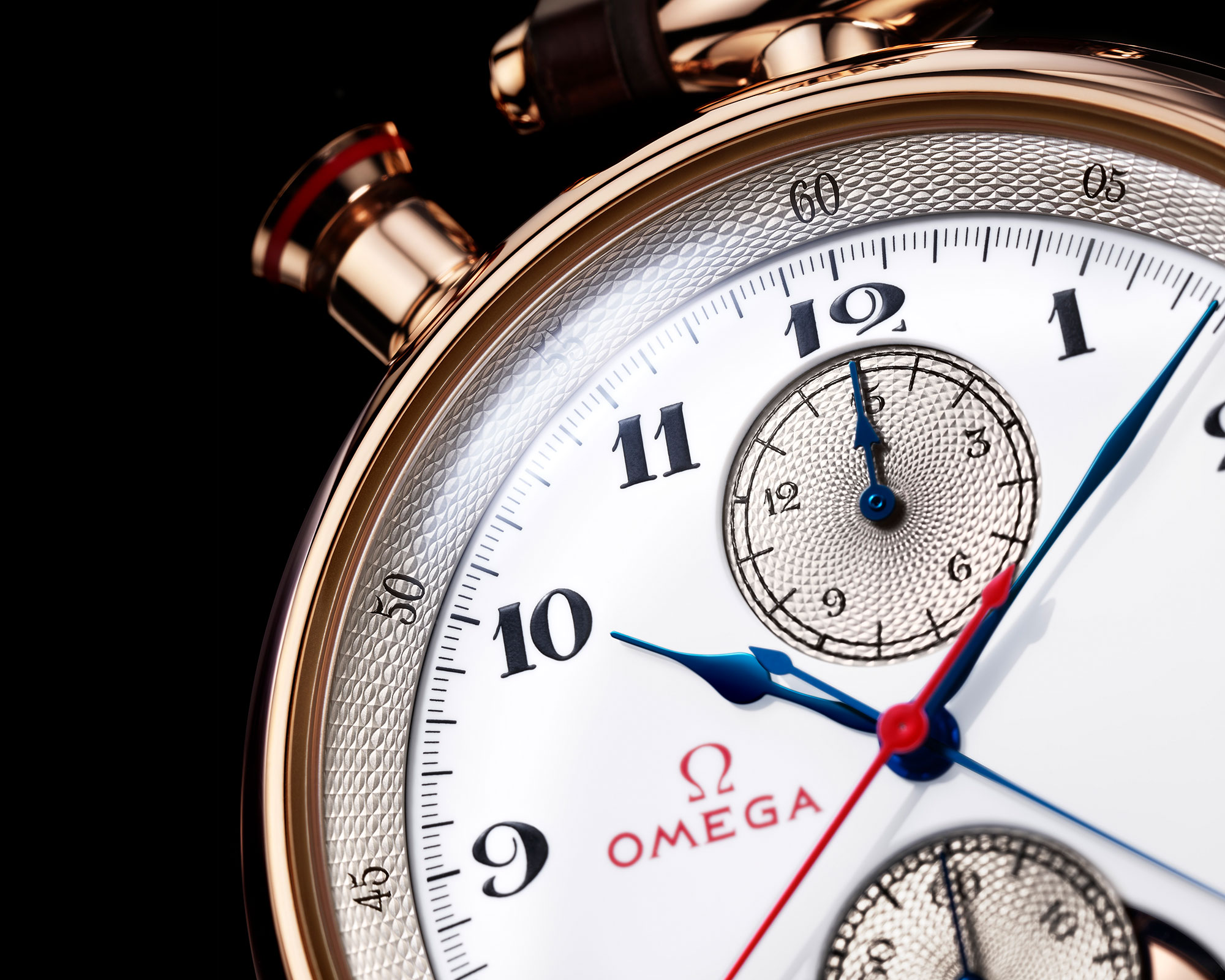
Further materials used for the Chrono Chime watches
Sapphire crystal
For the sapphire crystal of both watches, Omega uses synthetic sapphire crystal with a highly scratch-resistant and anti-reflective treatment. Before the machining and finishing processes take place, the sapphire crystals are produced using the ‘Verneuil process’, also called ‘flame fusion’. Gradually developed from 1883 onwards by a French chemist, it involves the melting of the raw substance using oxyhydrogen flame and the crystallisation of the melted droplets to form a cylinder. Graded 9 on the Mohs-hardness scale (graded 1-10), the resulting sapphire crystals are virtually scratch-proof and very hard, keeping the view of the dial crystal-clear. Of course, in the case of the Speedmaster, Omega had to decide whether to go for this more contemporary material or old-school hesalite – but for this extraordinary collector’s piece, the elegant choice of sapphire crystal feels much more appropriate.
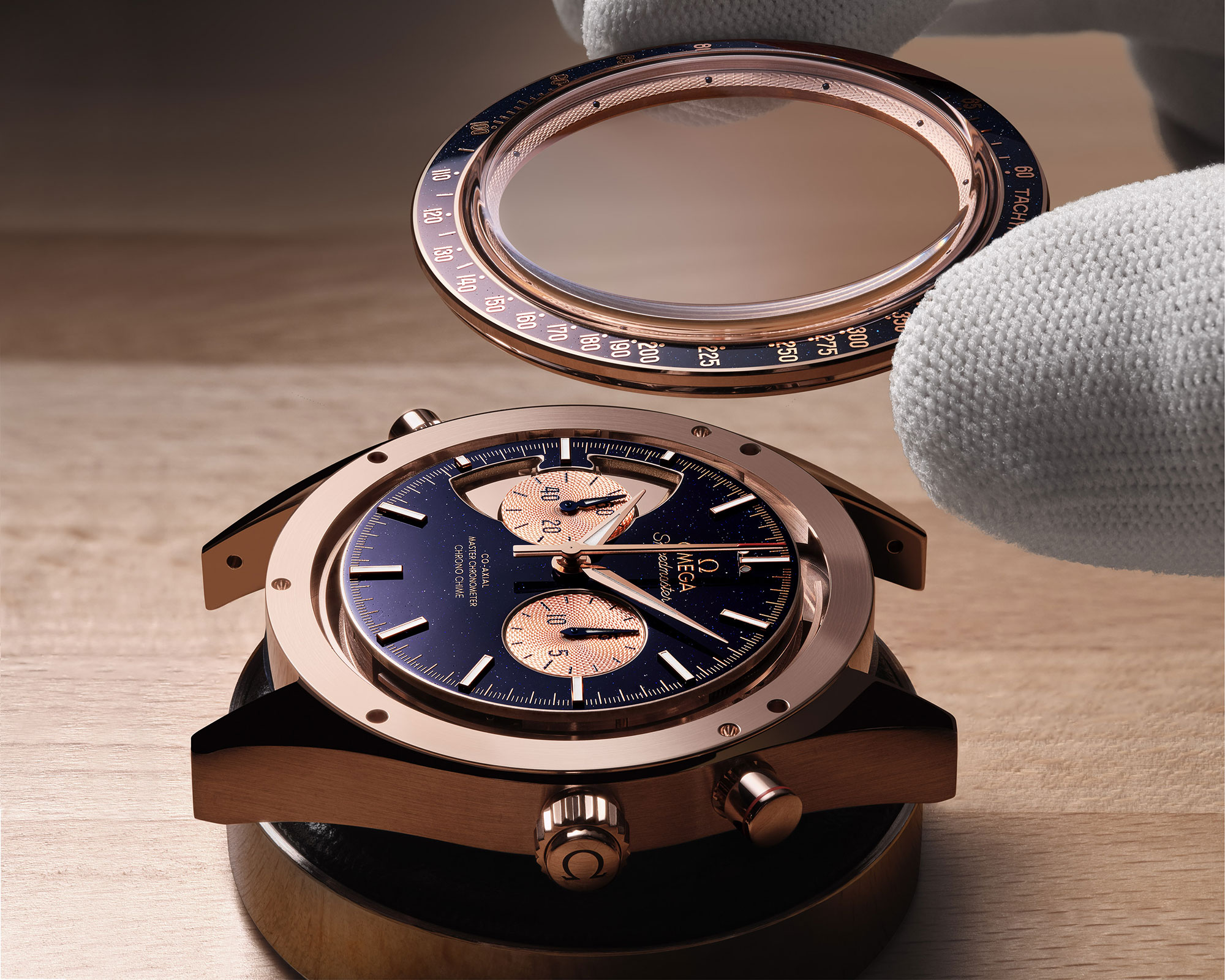
Sedna Gold
Both watches are housed in Sedna Gold cases, an 18-carat red-gold alloy conceived by the Swatch Group and developed in-house by Omega in 2012. Composed of more than 77 percent gold, copper and palladium, it has exceptional resistance to discolouration and loss of shine, while keeping a cool and contemporary glow. But there’s another reason it’s an ideal material for a pair of minute repeater watches that are the ultimate collector’s pieces: Sedna Gold hardens over time, and unlike platinum, it does not dampen sound. Thus, the material used for the movement, case, and gongs of the watches unite to create an ideal environment for emitting an incredibly clear, high level of sound.
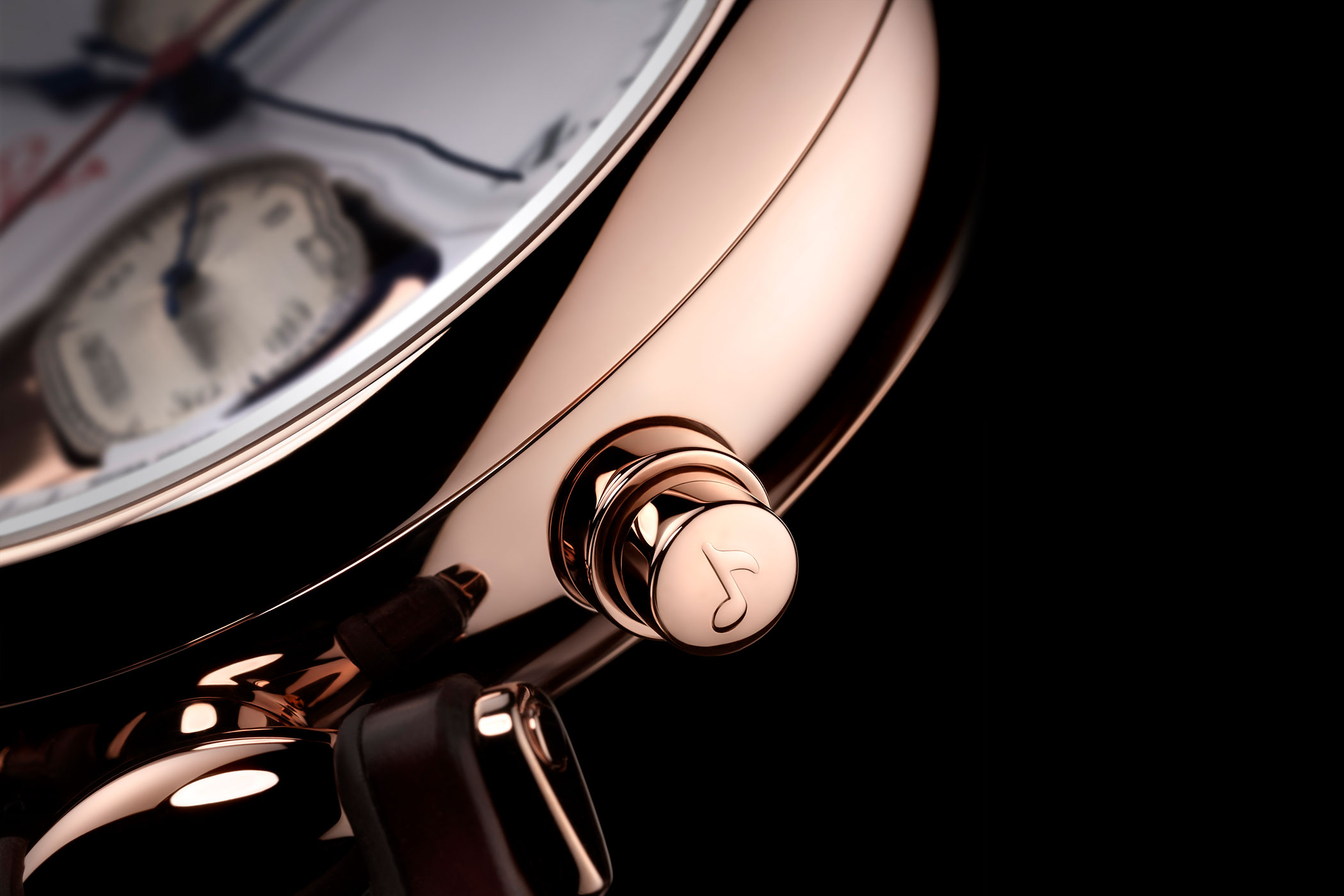
A box with a musical touch
Speaking of emitting sound: the box these watches come in are far from ordinary. Rather, they are designed to emit a resonant and clear sound, exactly as an instrument would do.
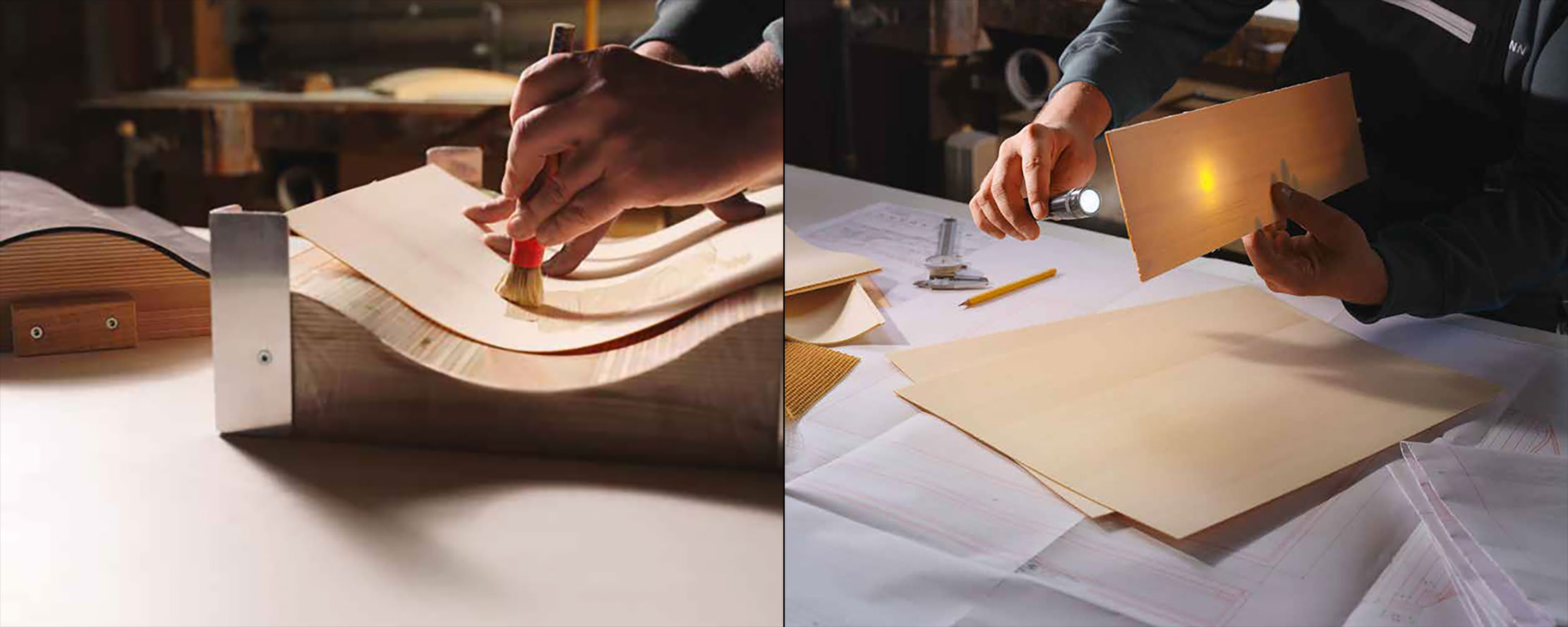
When making high quality violins, a ‘tree picker’ selects the ideal wood for the instrument. Omega collaborated with a ‘tree picker’ to create the sleek walnut boxes destined to hold these two special Chrono Chime watches. The boxes house a resonance plate that amplifies the sensory experience of the timepieces, while the wood itself was taken by the ‘tree picker’ from the Risoud Forest, located on the edge of the watchmaking valley: the Vallée de Joux.
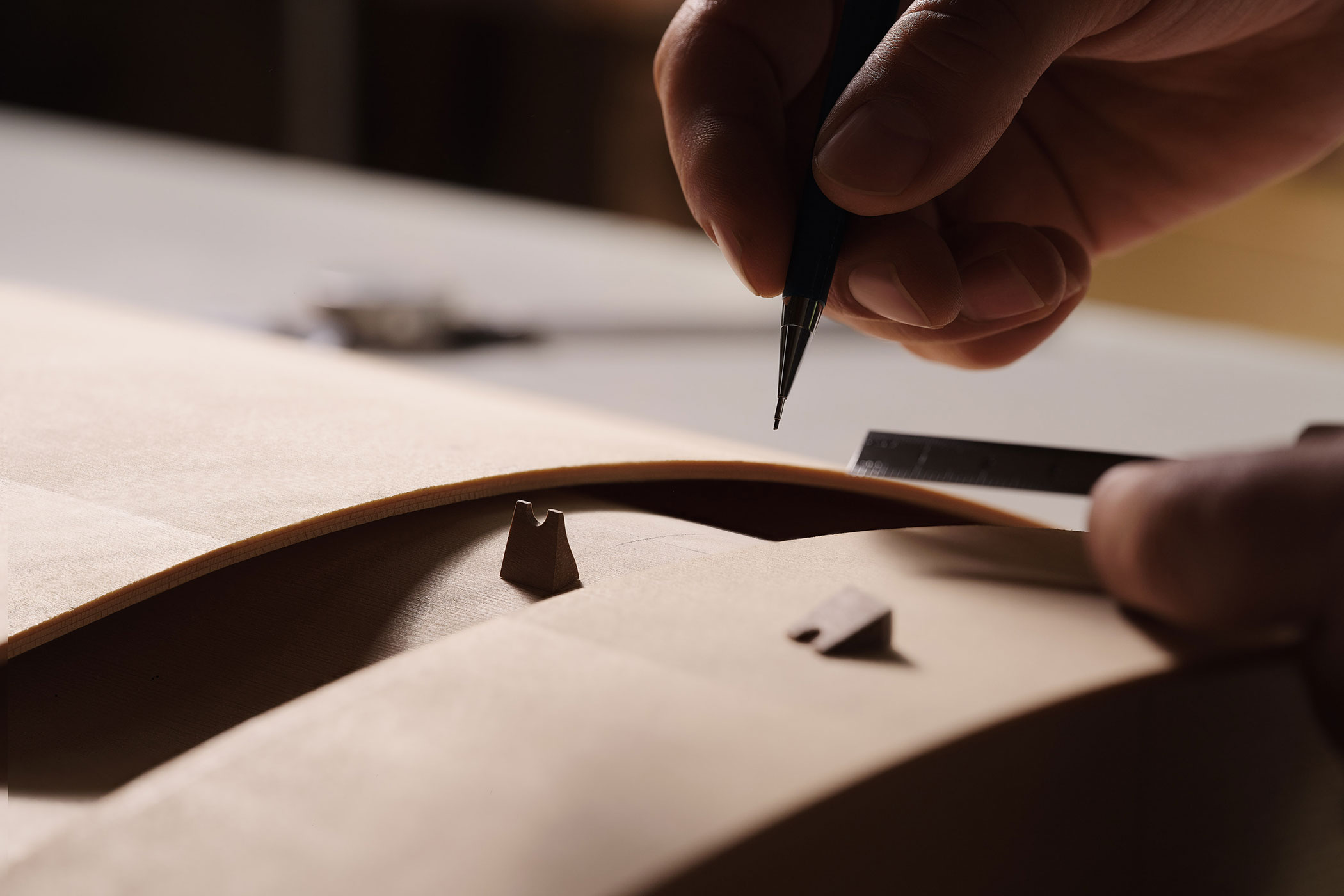
Only one in every 10,000 trees makes the cut as a candidate. The resonance spruce for the plate, found in the deepest, harshest parts of the forest, is believed to ‘speak to the heart of humankind’. Legendary instrument makers such as Antonio Stradivari, maker of the priceless 18th century Stradivarius violins and cellos, took their wood from the Risoud Forest. The wood is harvested in late autumn so that no sap flows from the material. The resulting thin wooden planks compiled for the Omega watch boxes are between 300 and 400 years old.
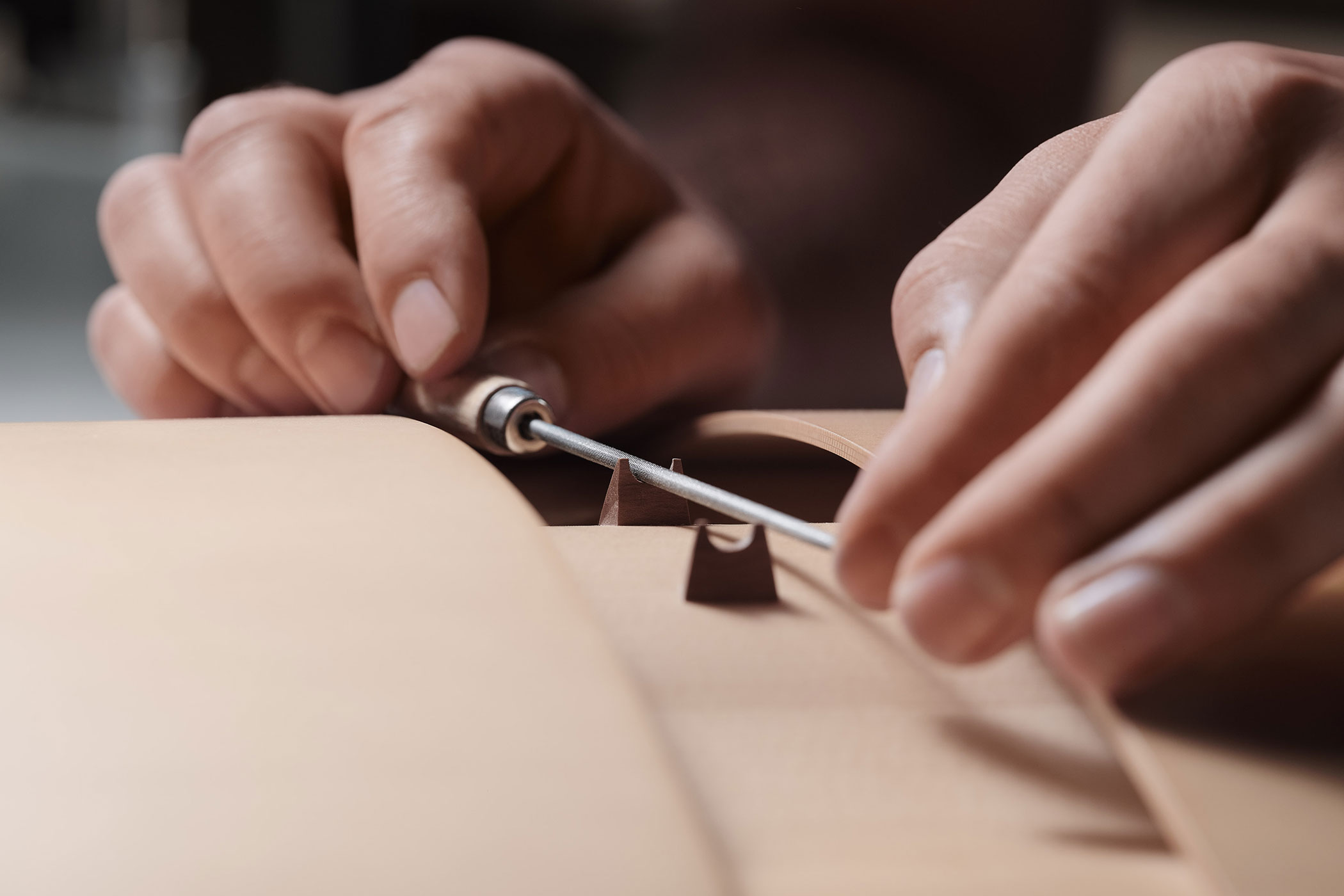
Contents of the box
As well as holding different watches, the boxes containing the Speedmaster Chrono Chime and 1932 Olympics model vary slightly in terms of contents. While the former comes with a magnifying glass to explore the watch’s details, a storybook and travel bag, the latter comes with not only these additions, but also an additional leather strap and two quilted leather cords, allowing the ‘timekeeper’to wear it as a discreet pocket watch or a stopwatch around the neck.

The significance of the Chrono Chime watches: Making its mark
We ask Aeschlimann one of the chief questions up for debate: does this pair of chiming chrono timepieces mark the dawn of a new era of haute horlogerie at Omega? ‘I don’t think that the new products are the beginning of a new range of watches in this price segment,’ counteracts the CEO. ‘I think it’s a symbol showing that we very much have a heritage – but we’ll keep this very, very exclusive.’ That said, Aeschlimann tells us, the watches are not going to be limited per se. The only limit, of course, is the level of watchmaking required for such timepieces – and as mentioned, they only have one (and a half) watchmakers with the skillset to create these complicated pieces. Therefore, Aeschlimann confirms, the watches will be limited to just a few pieces every year, for the next few years.
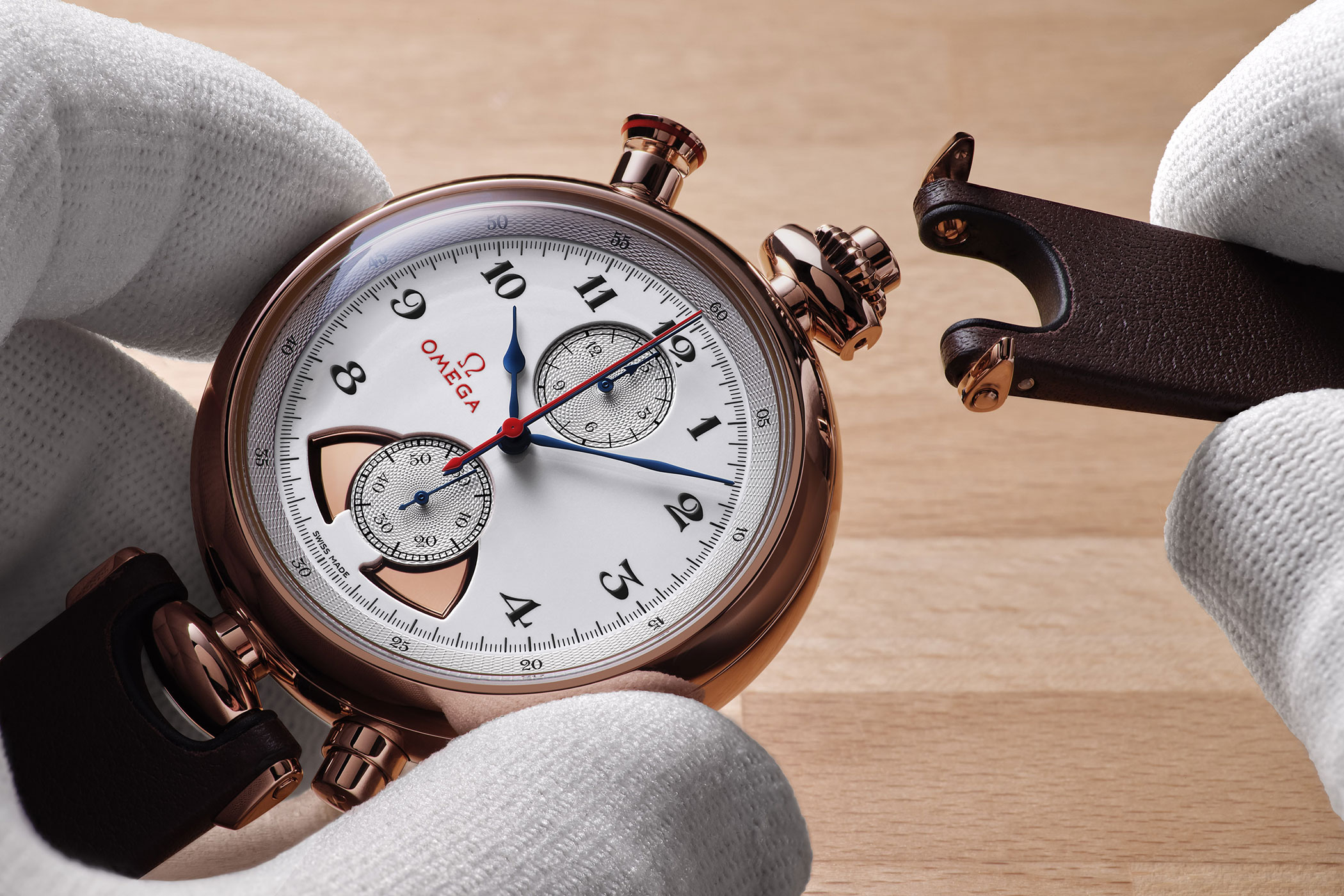
This raises another question many fans of Omega are asking: what, in Aeschlimann’s eyes, is the purpose of these watches? ‘For these minute repeater watches, we not only wanted to go right back to our DNA, but also create something that would take us to the next level. This milestone for the entire industry has the ability to coherently define who we are.’ We think he might just be right: with the haute horlogerie Speedmaster Chrono Chime and Olympic Chrono Chime, Omega is well and truly making its mark.
